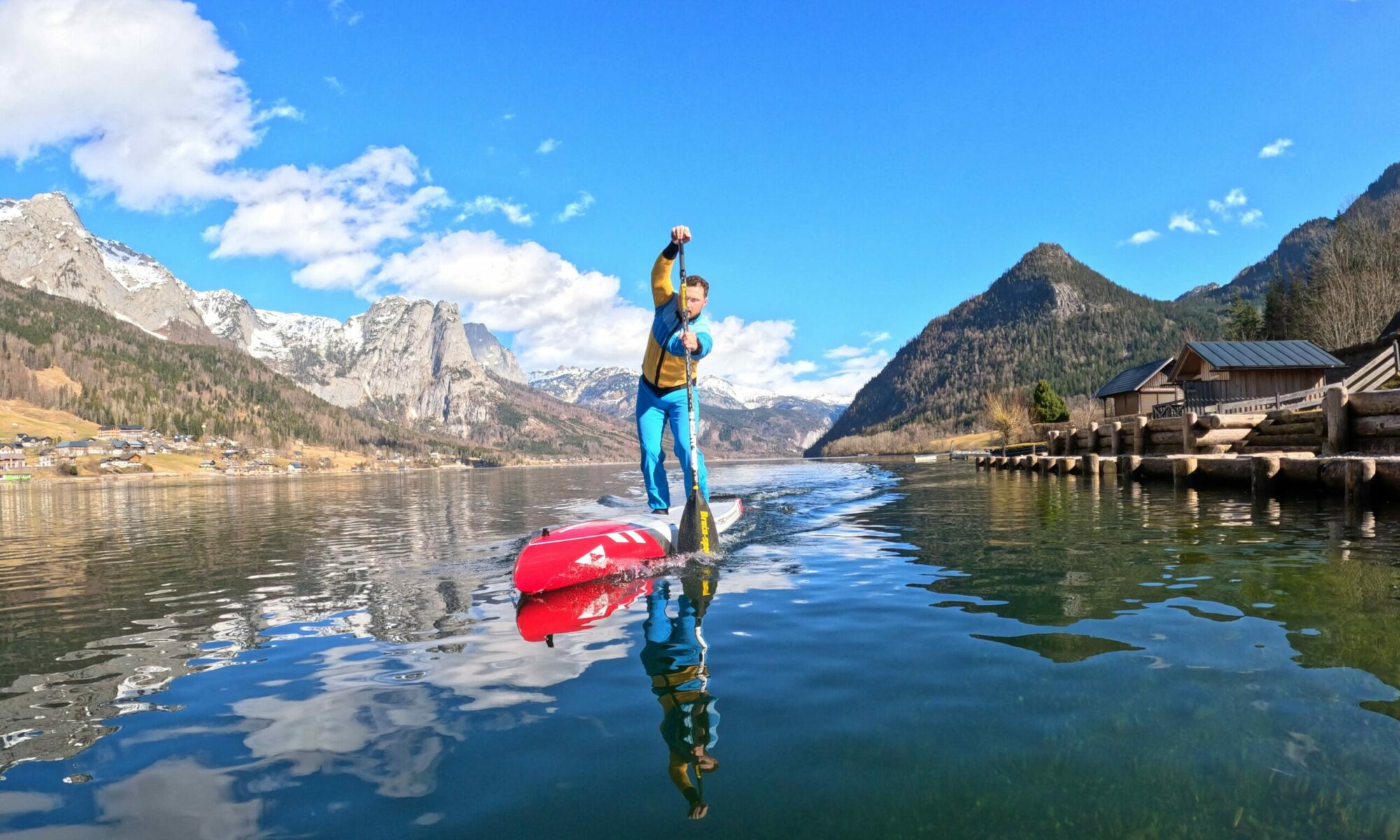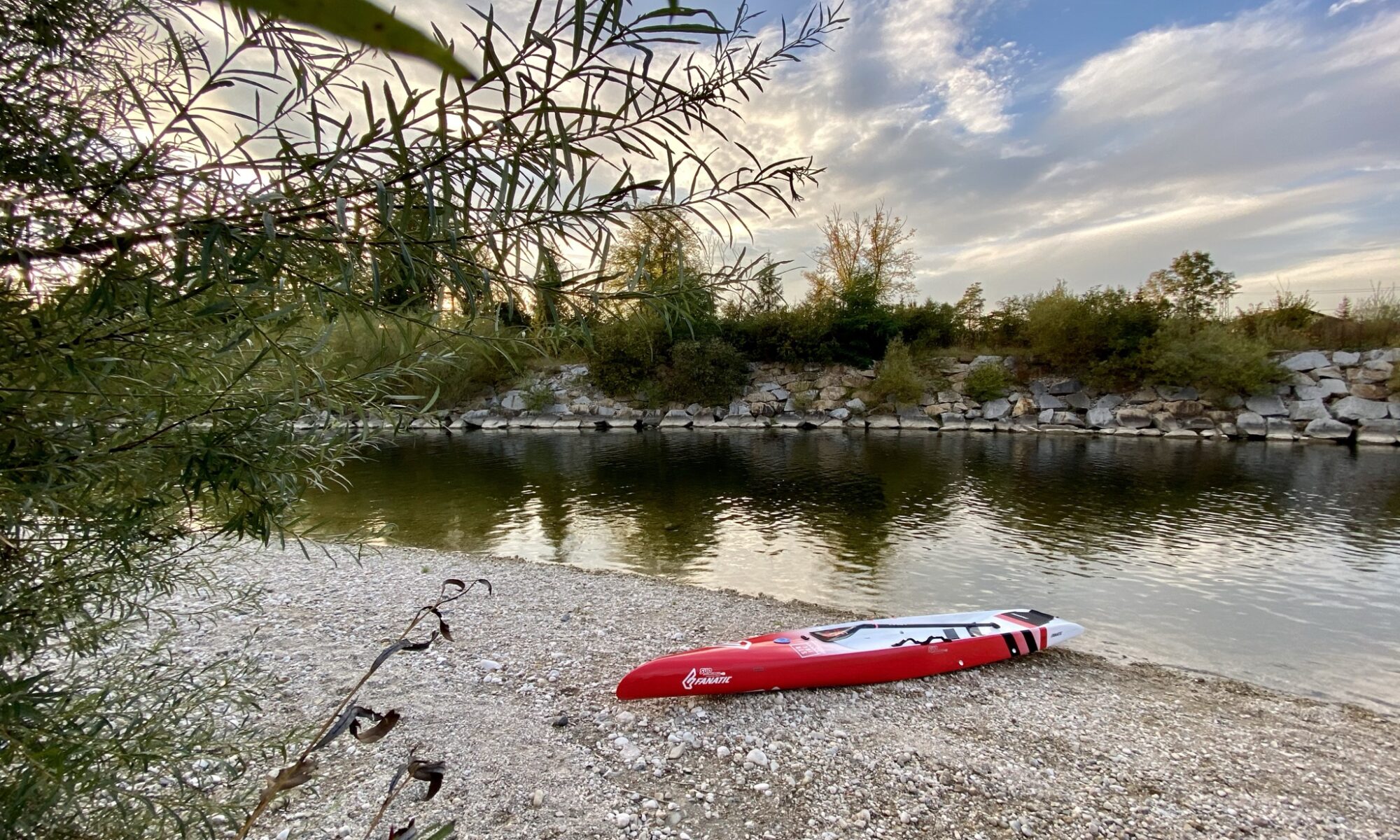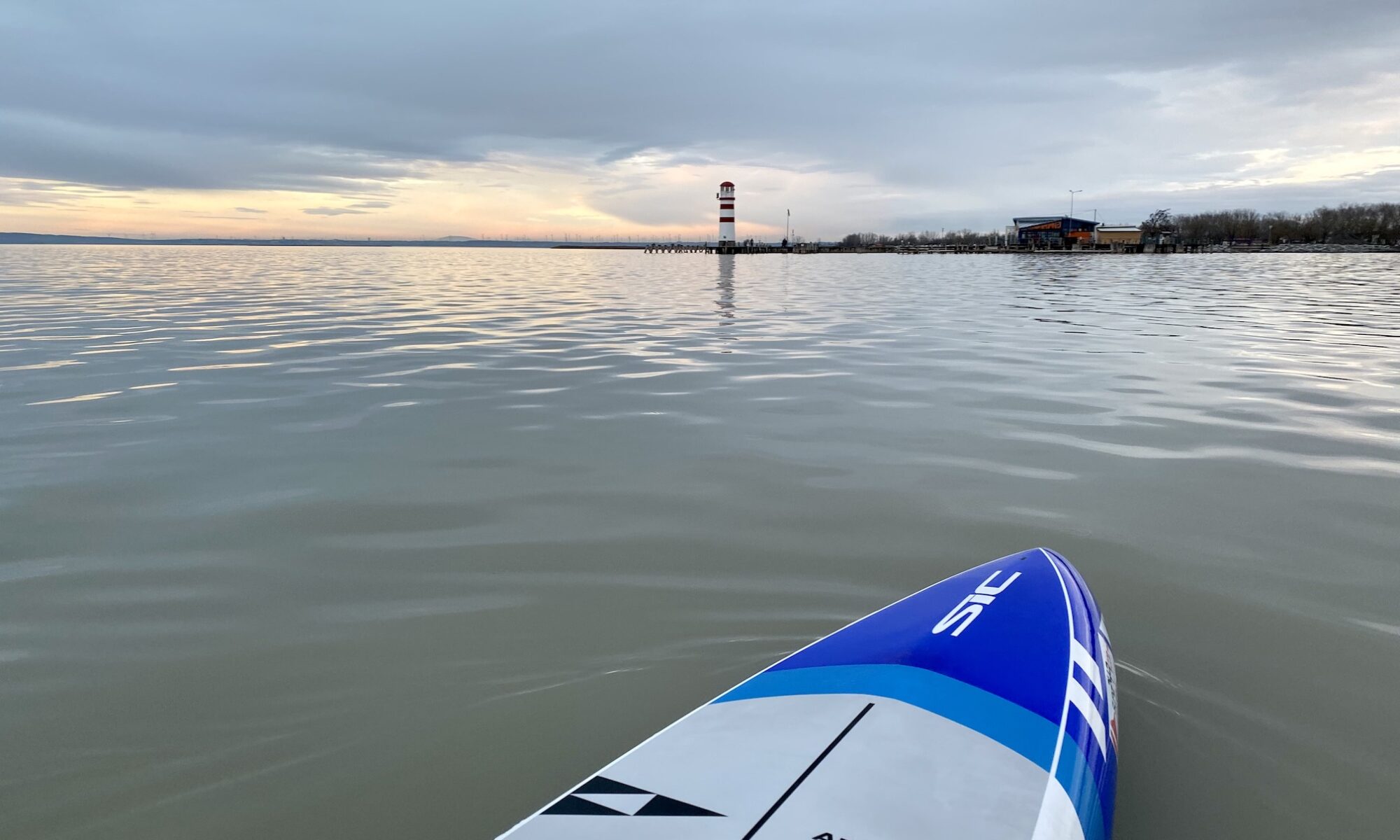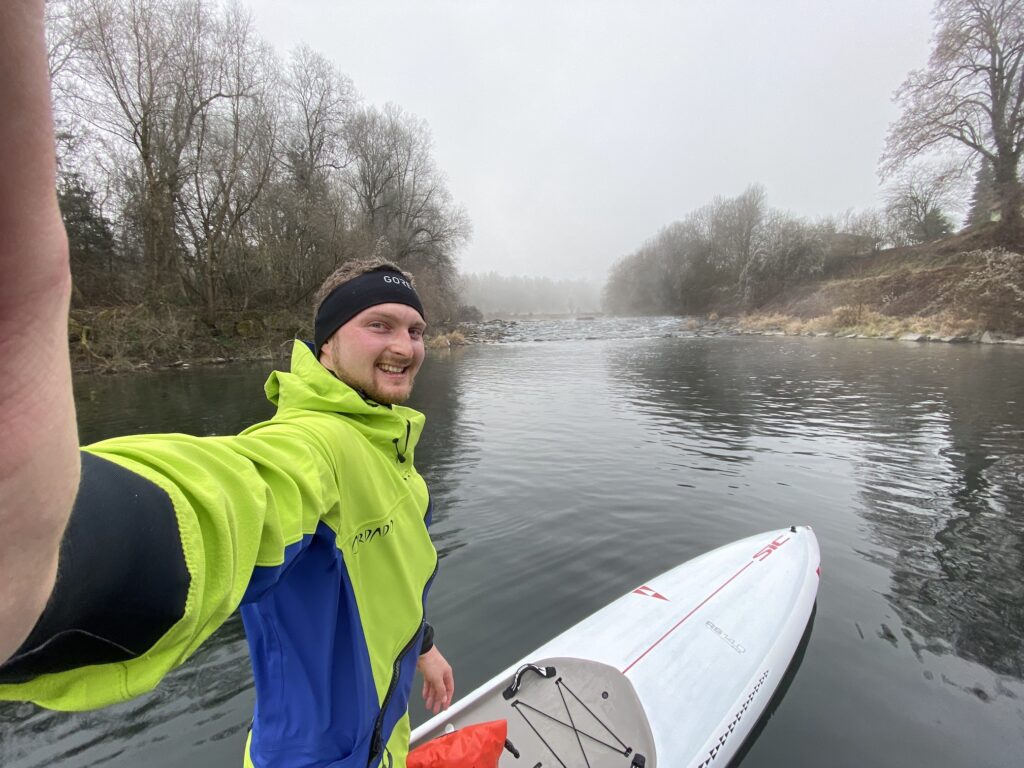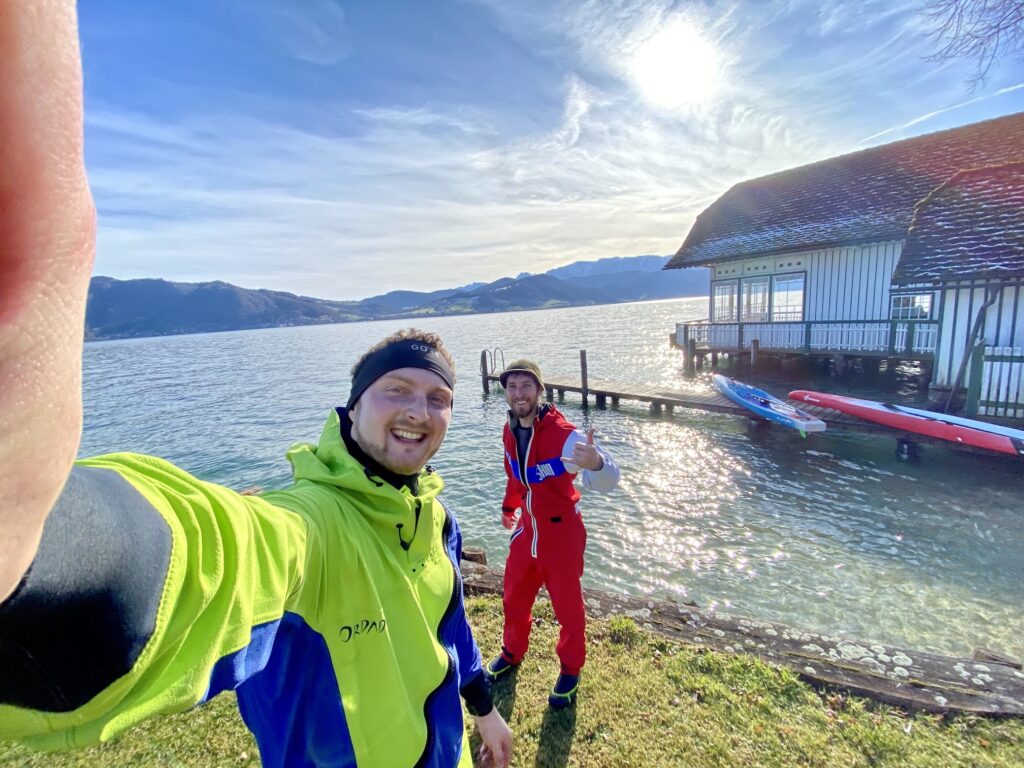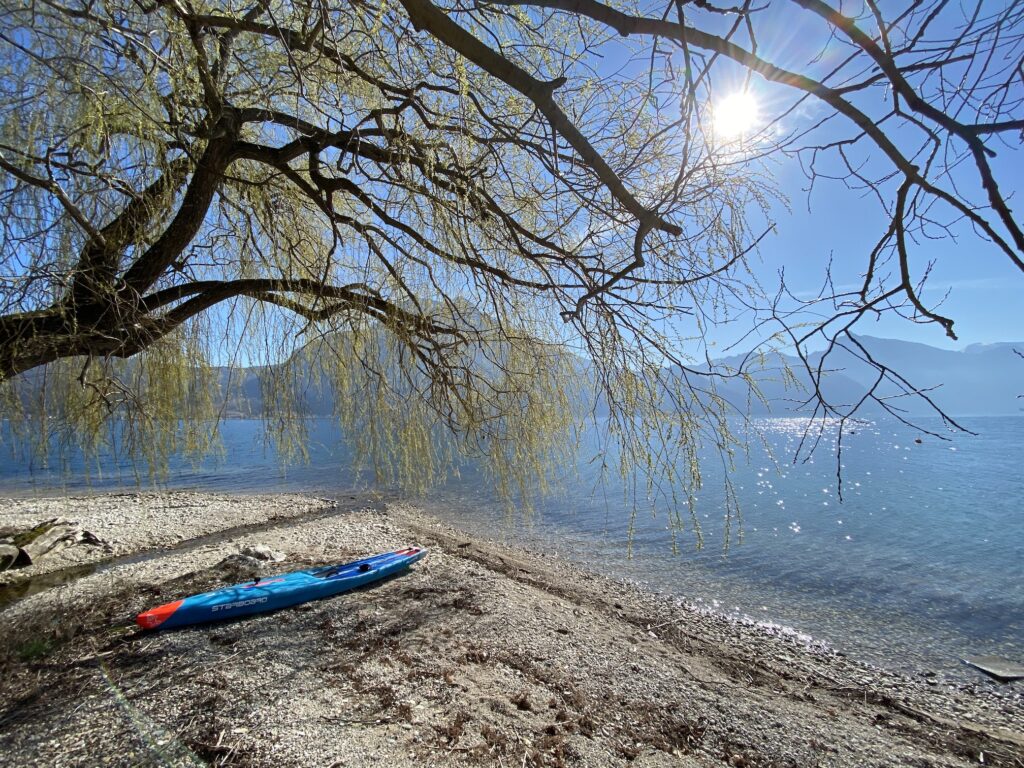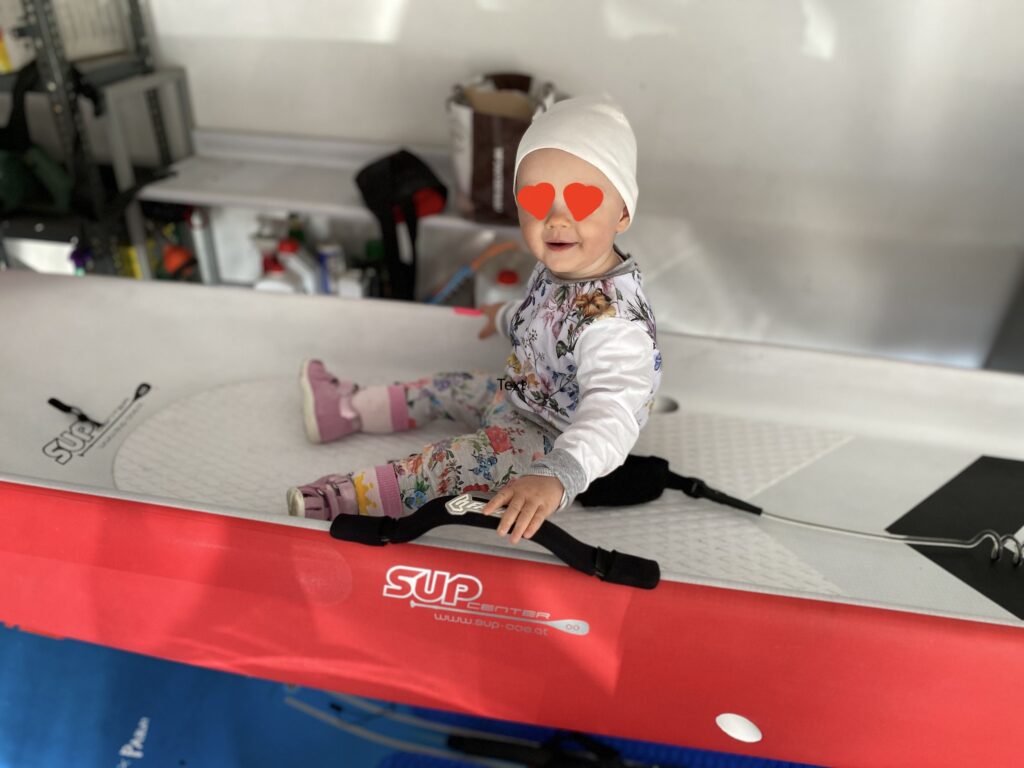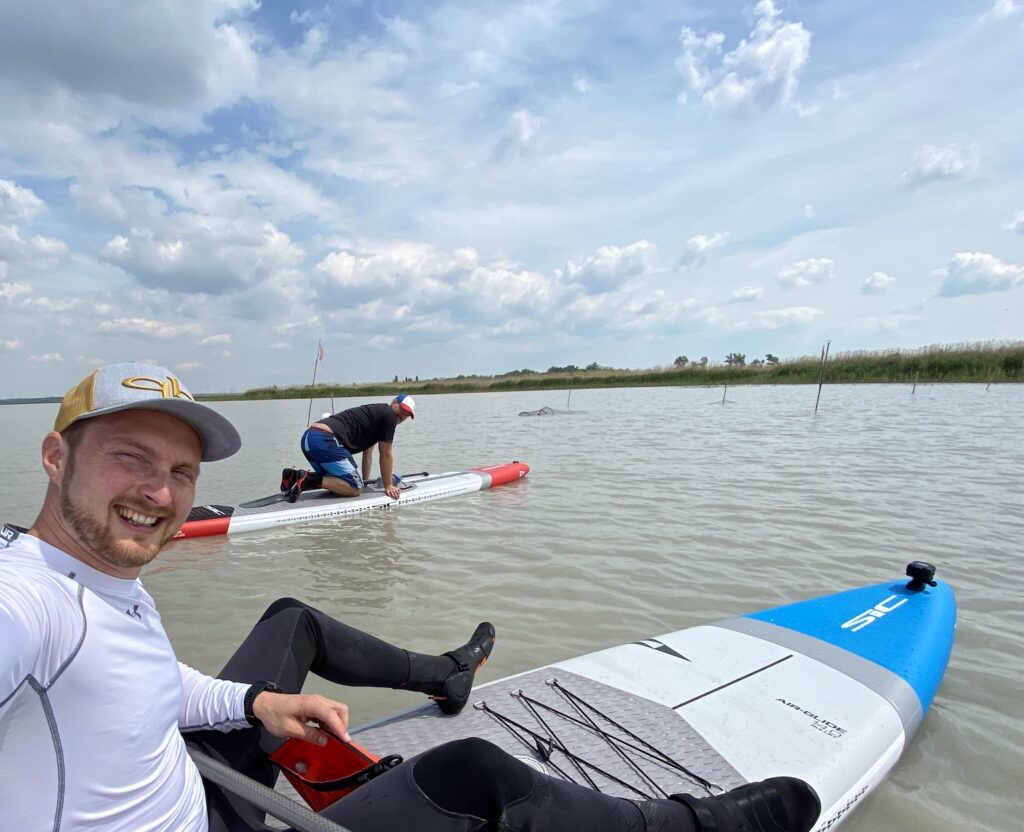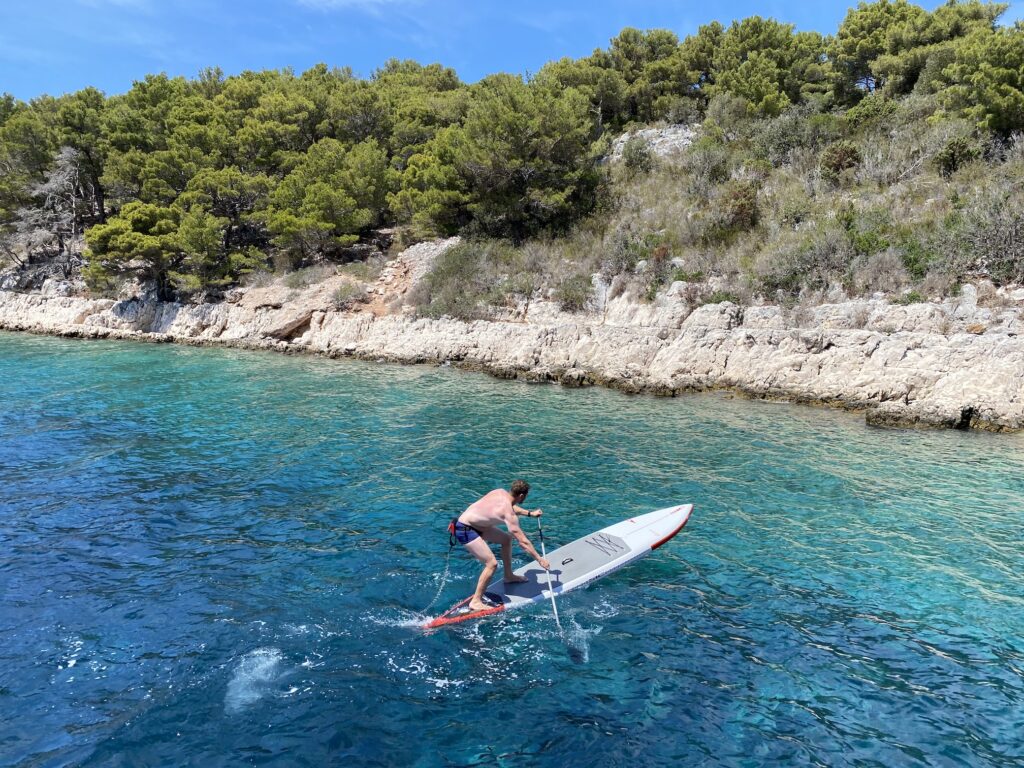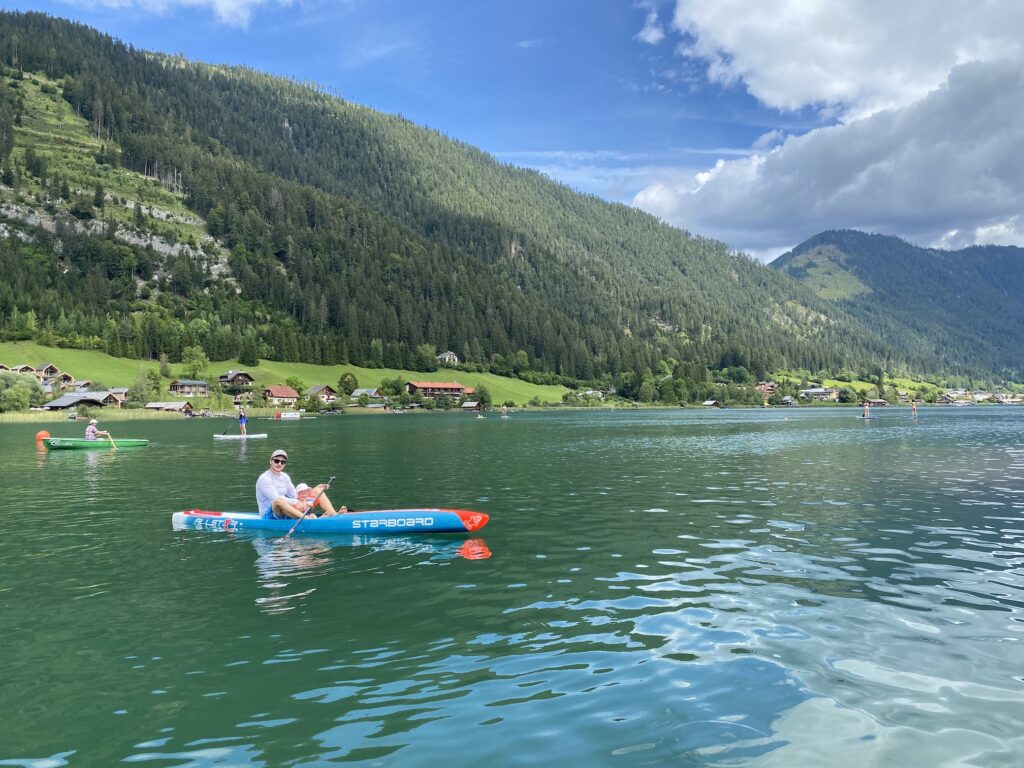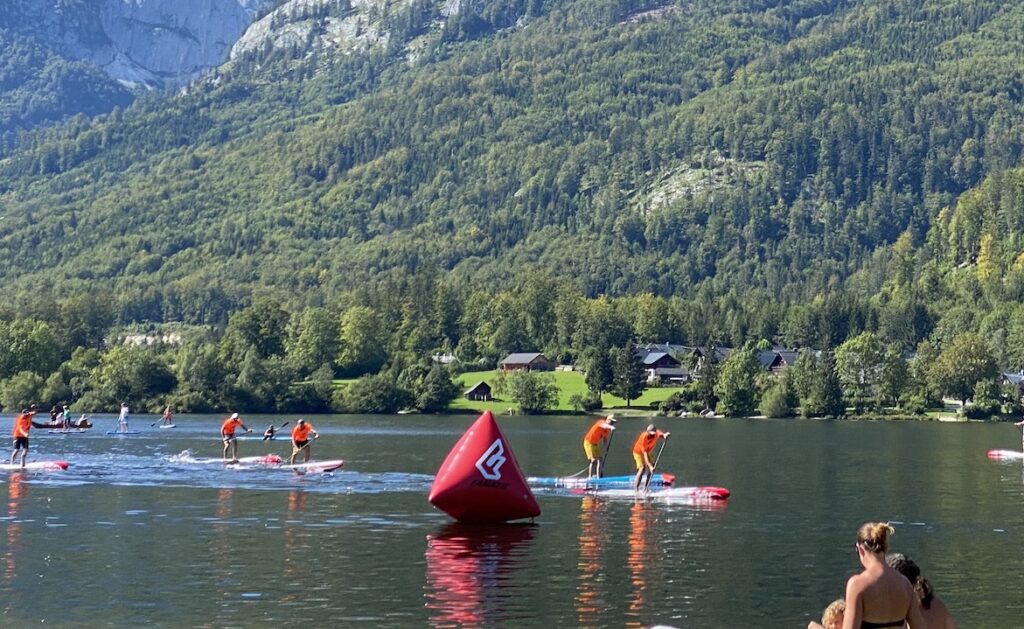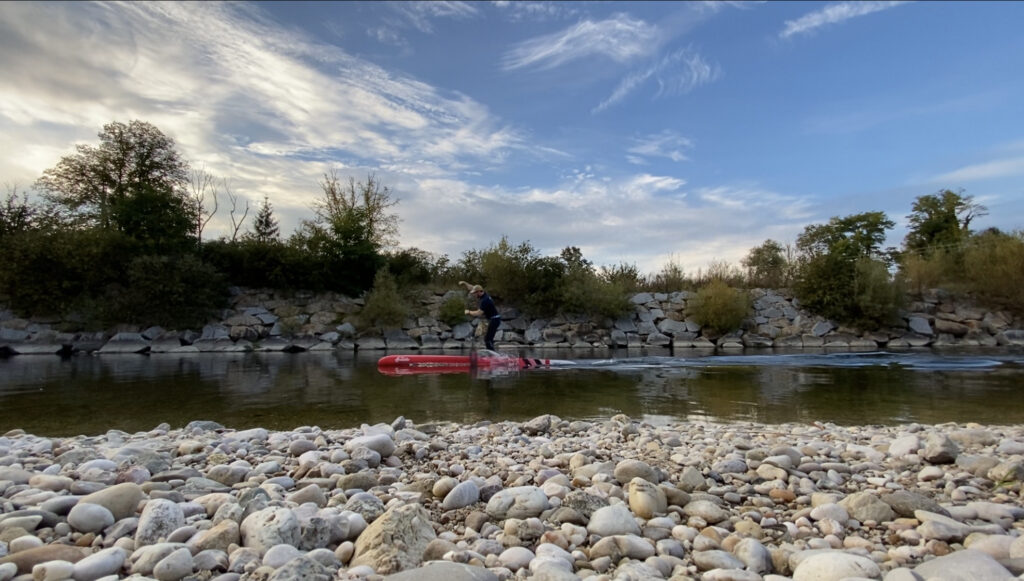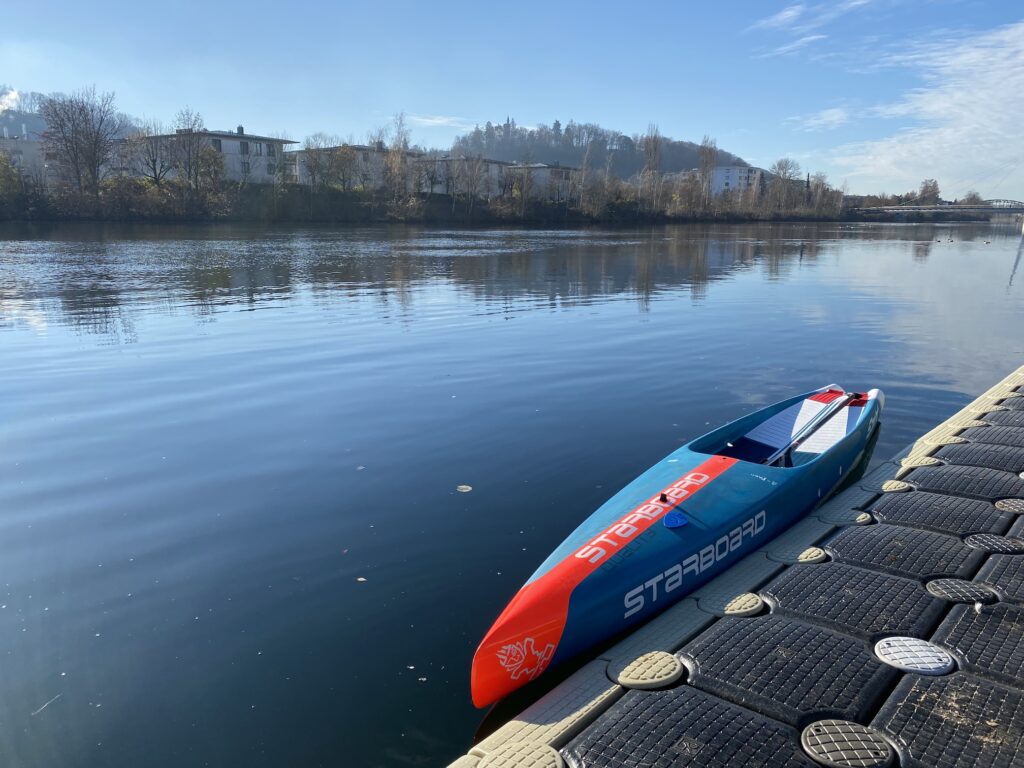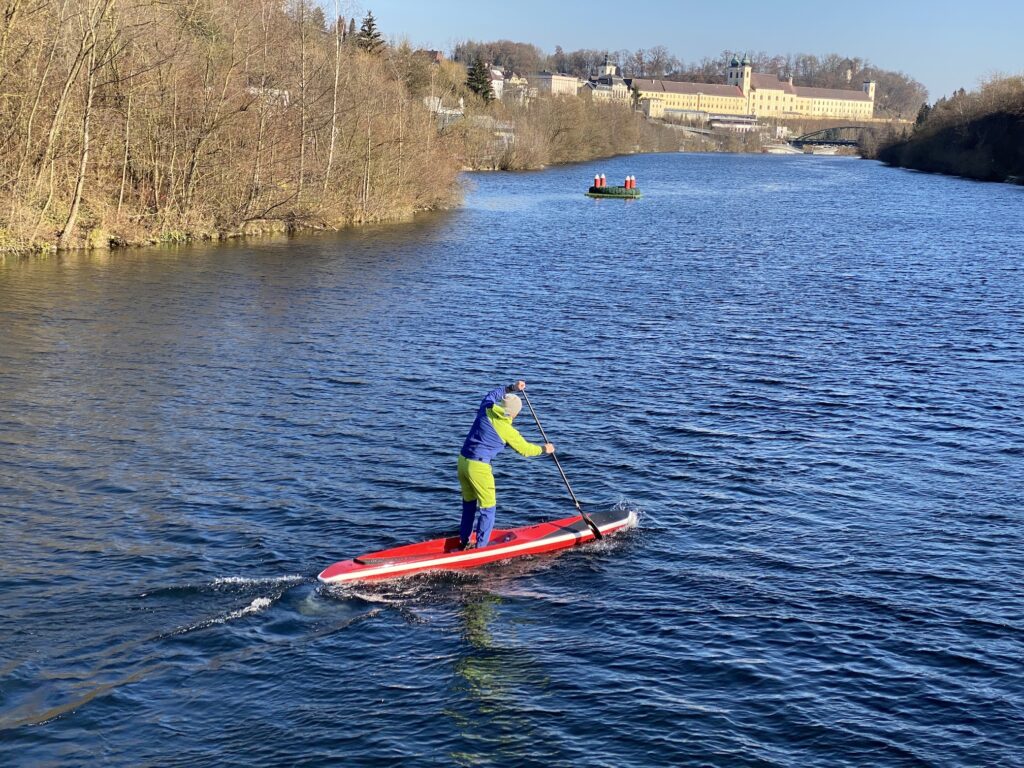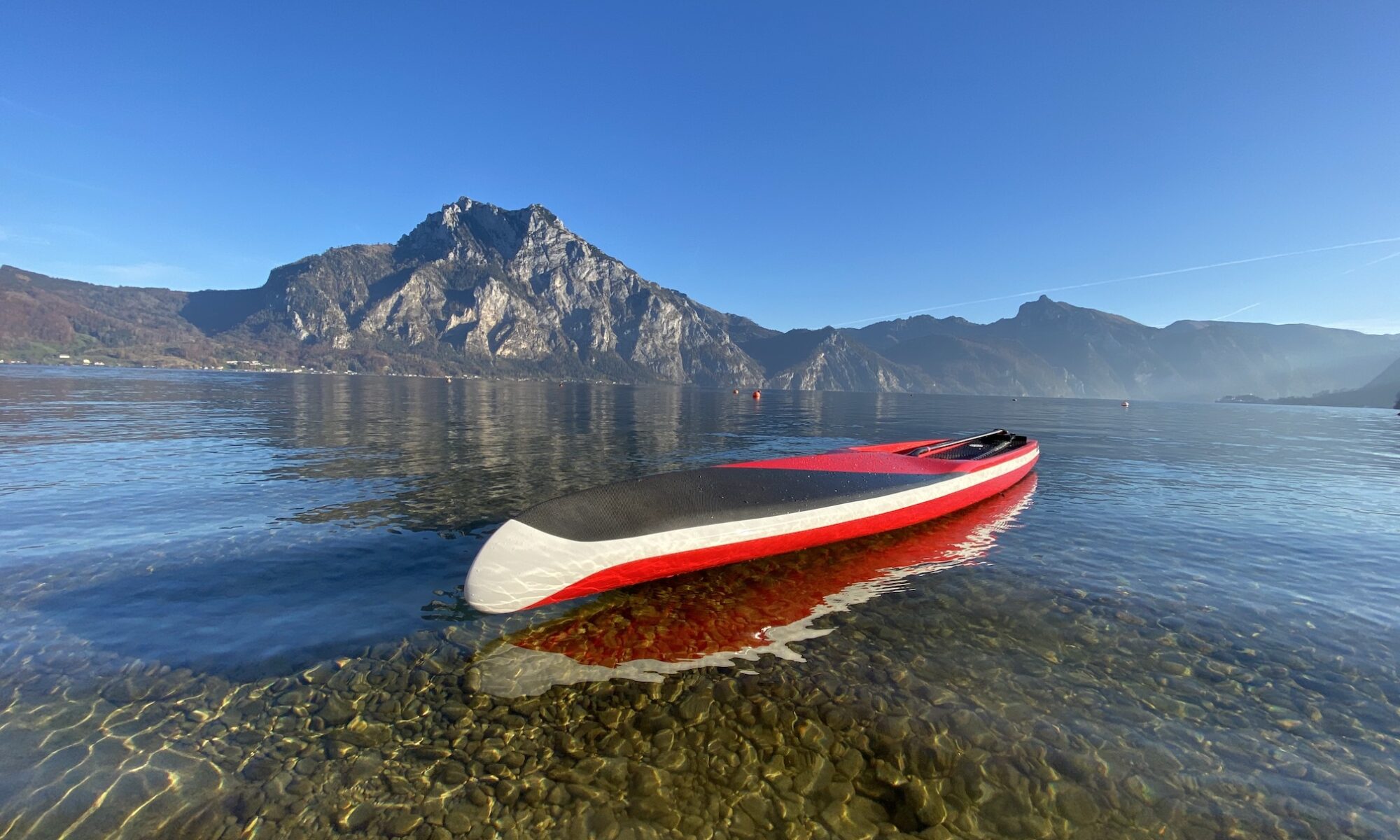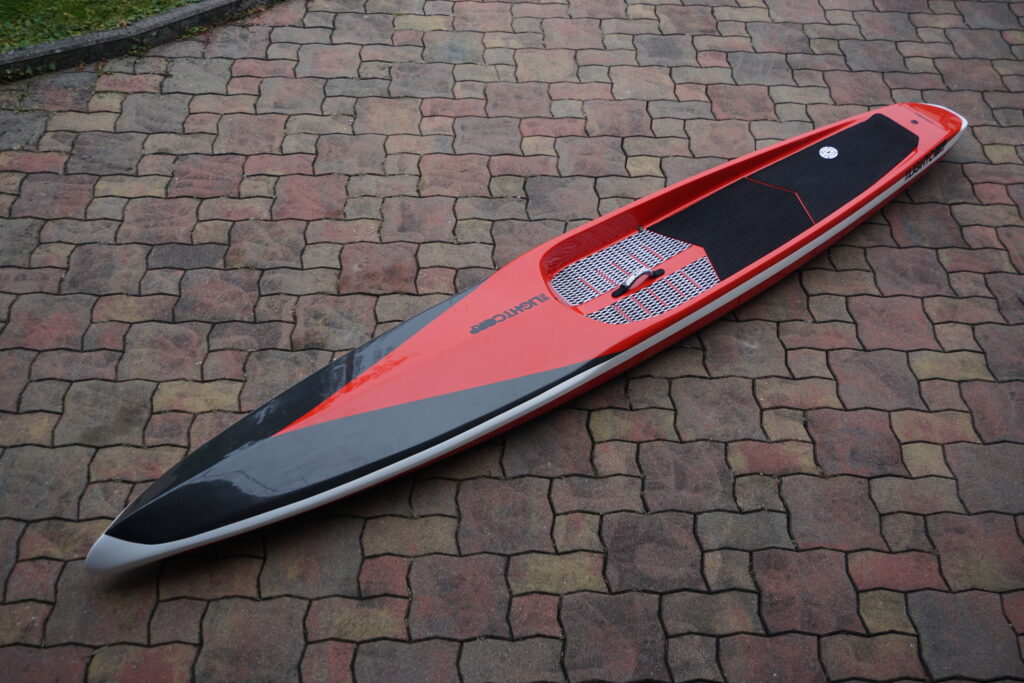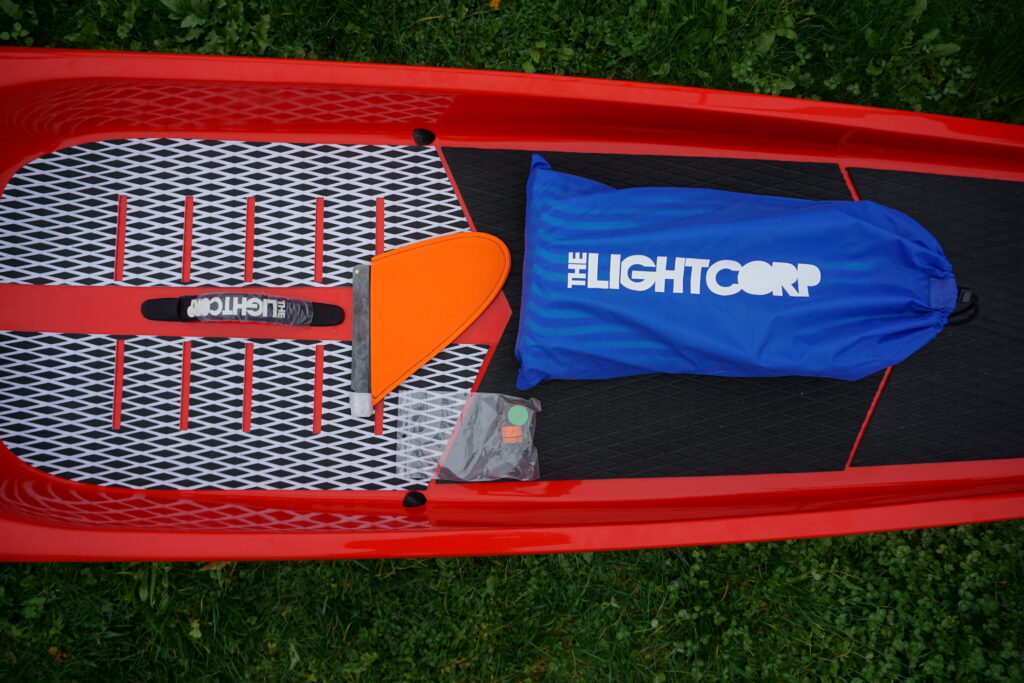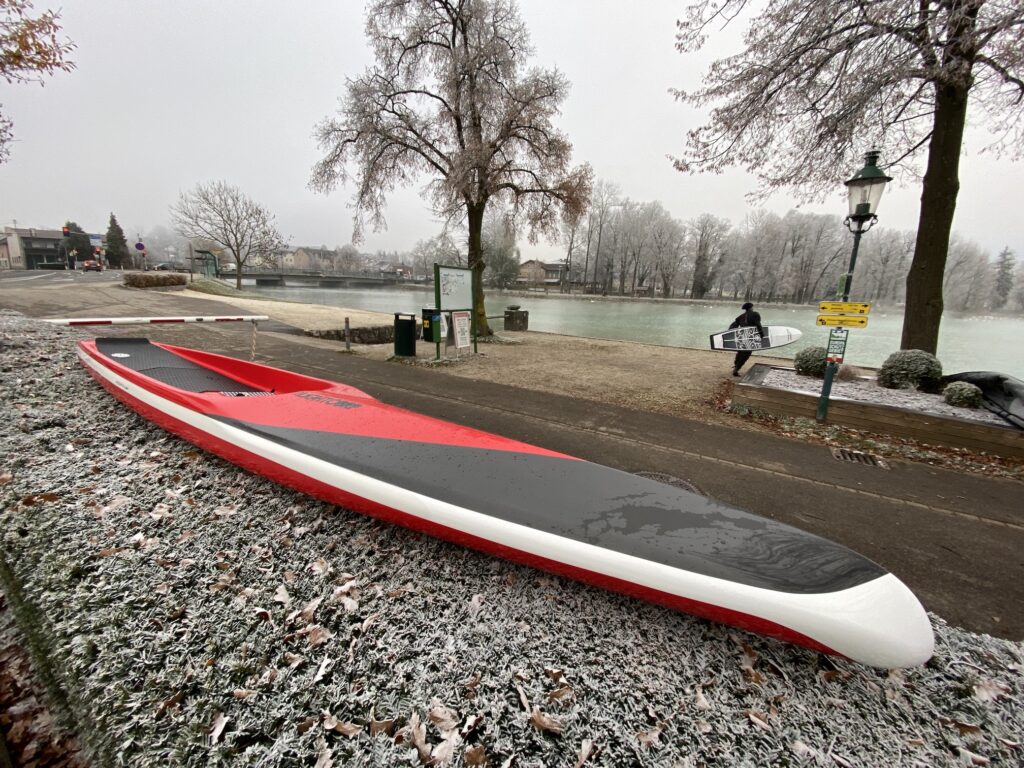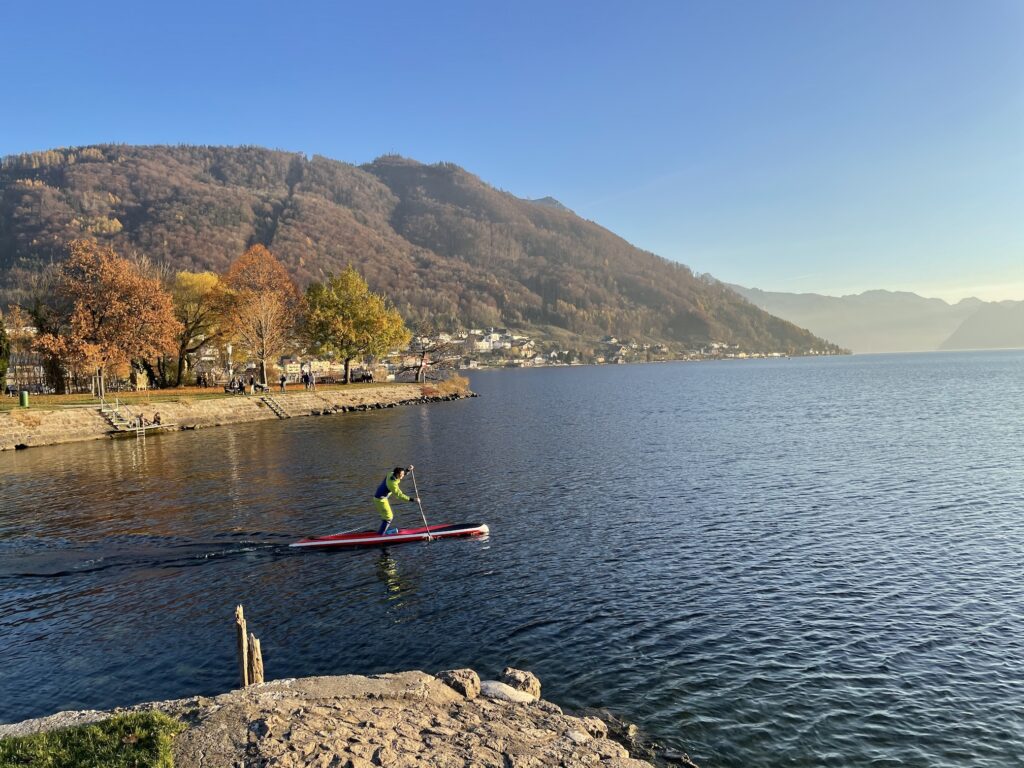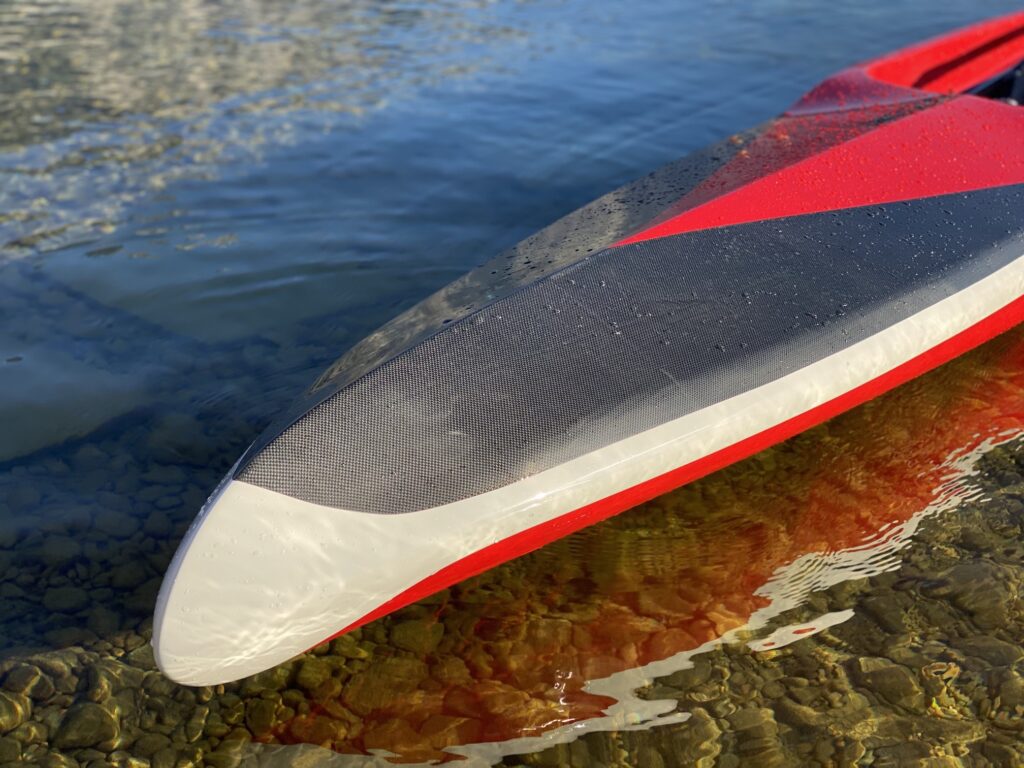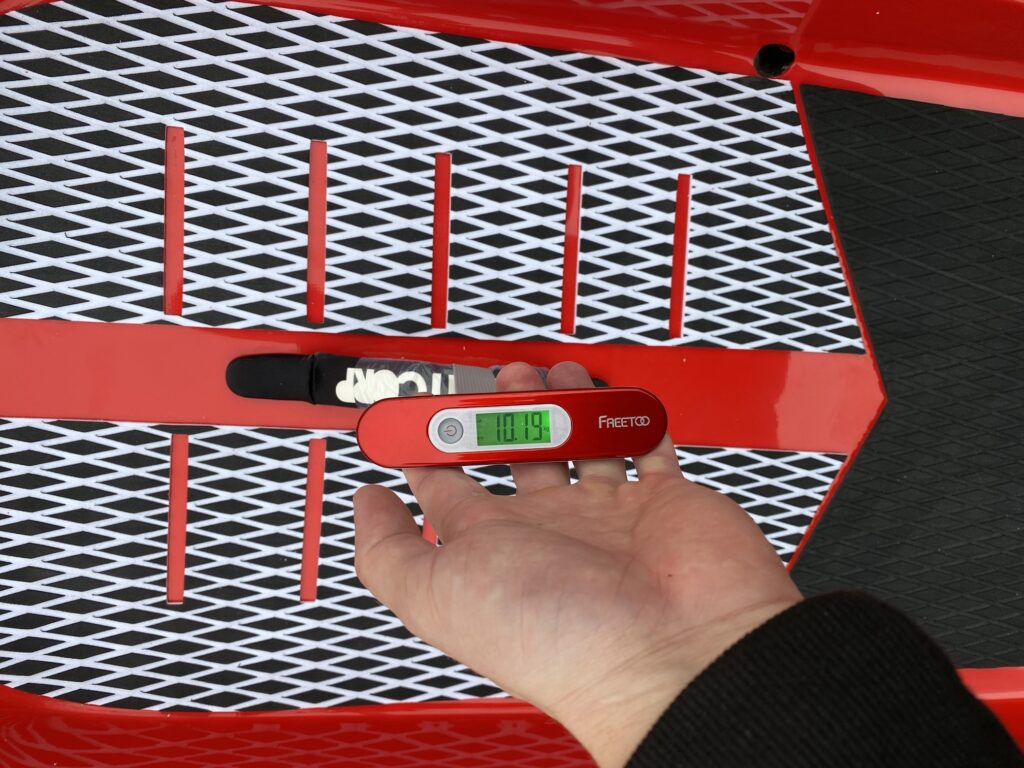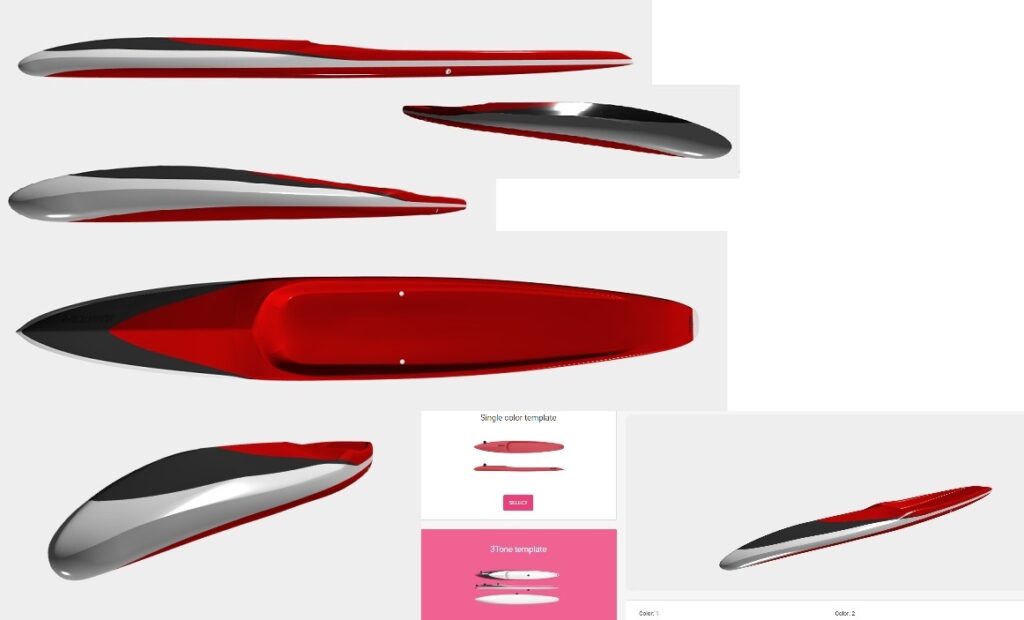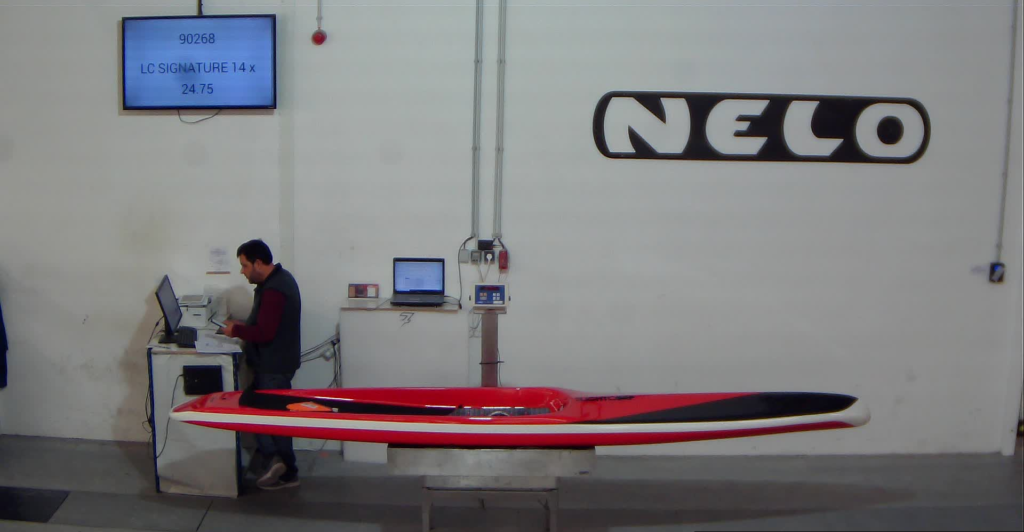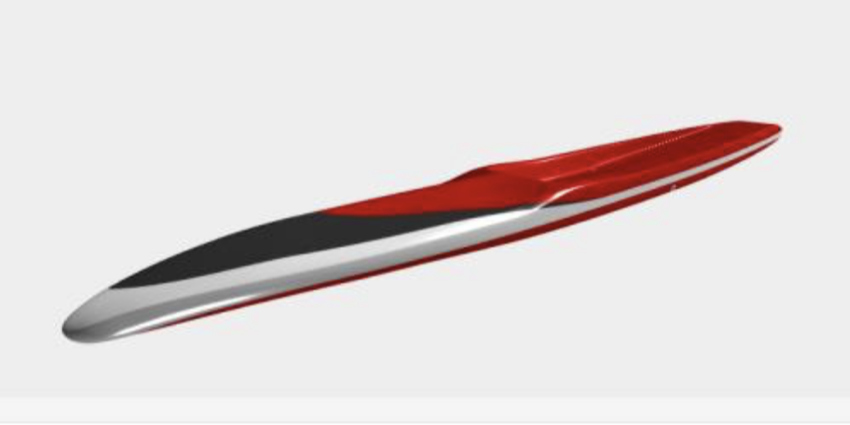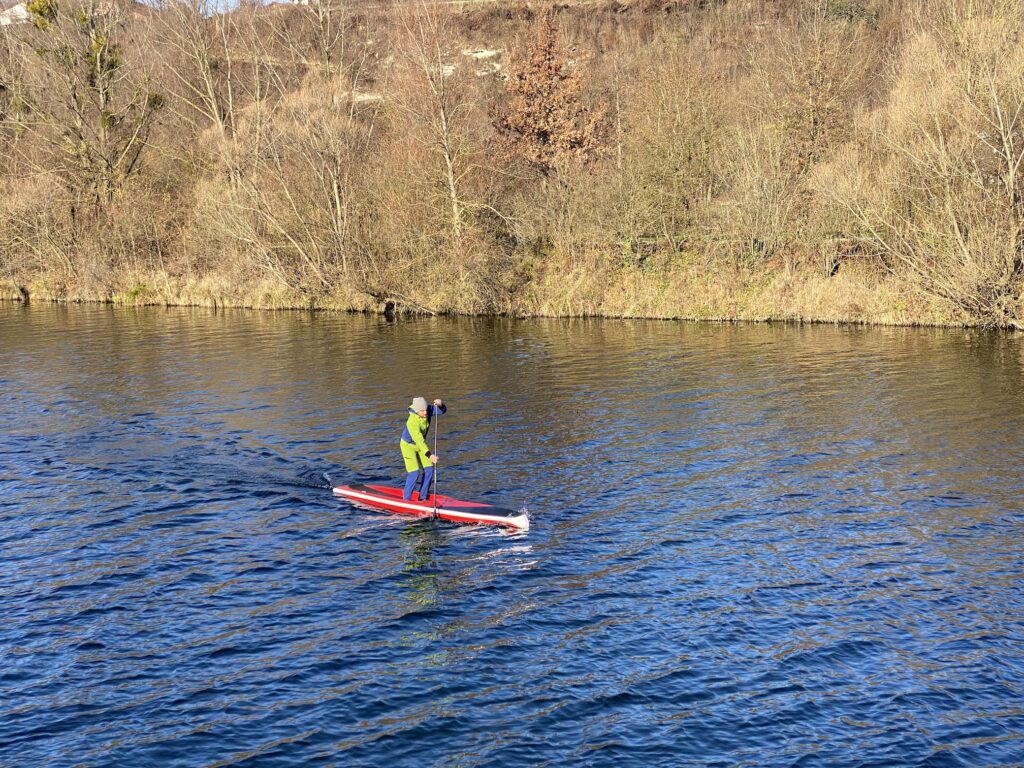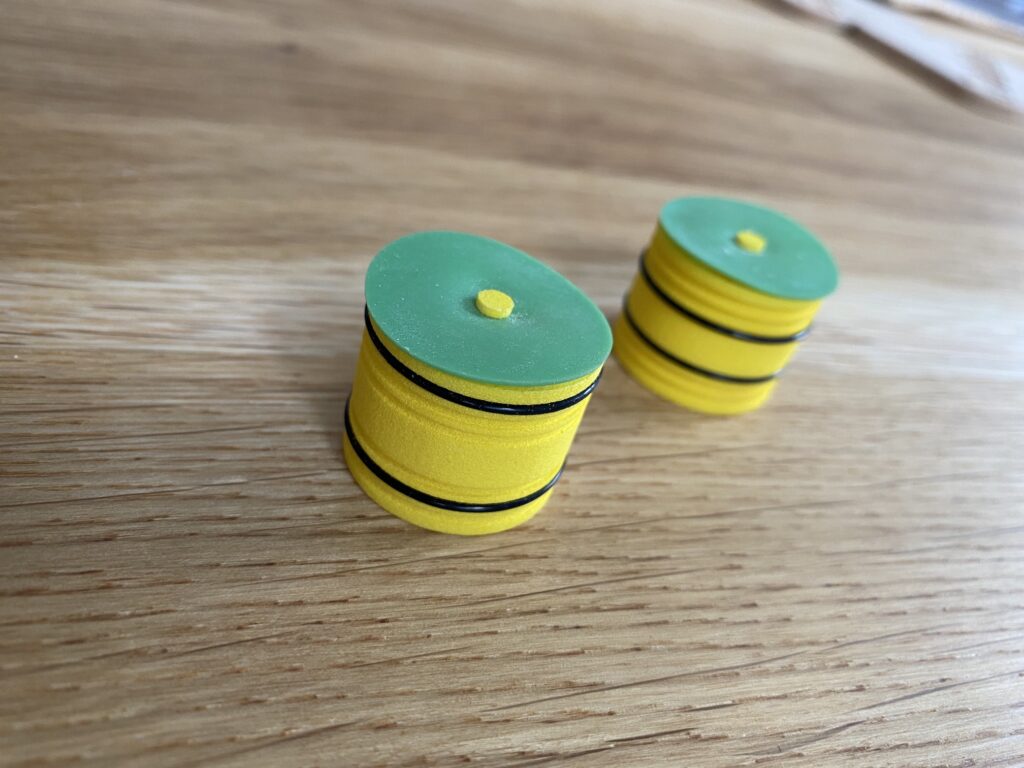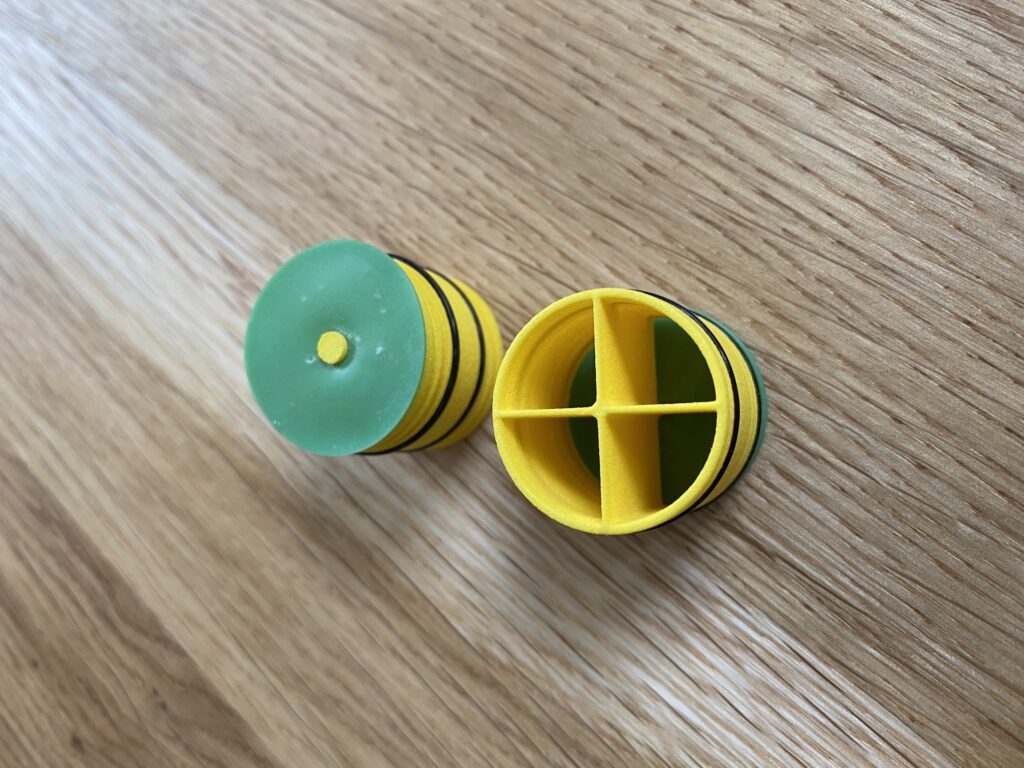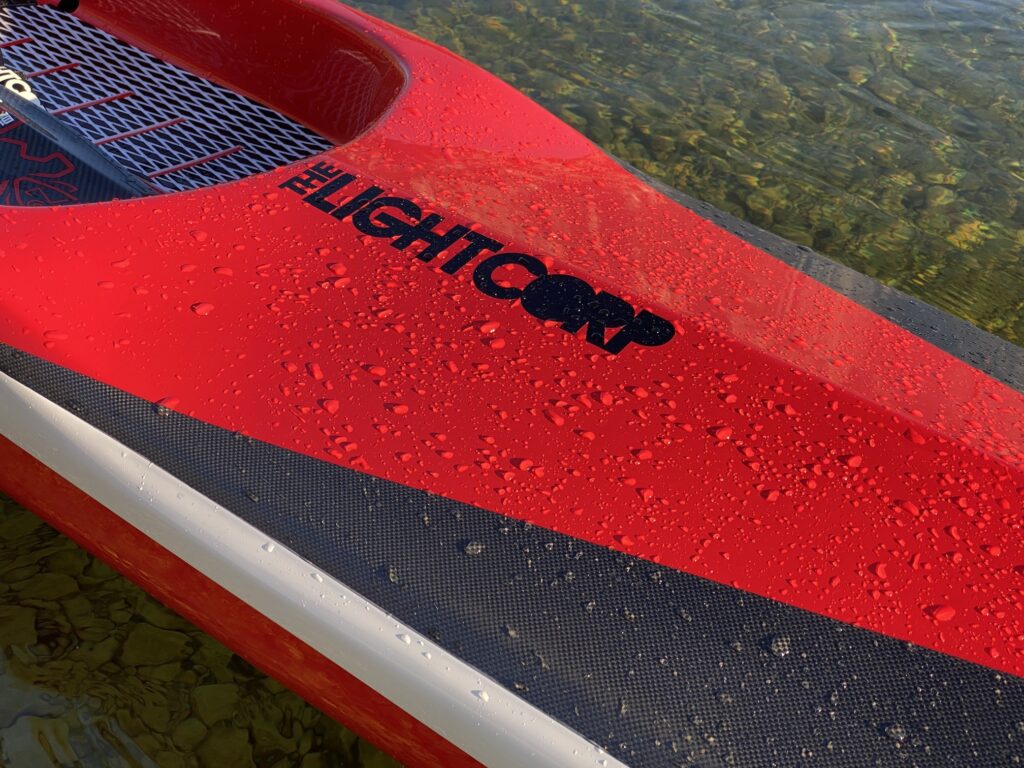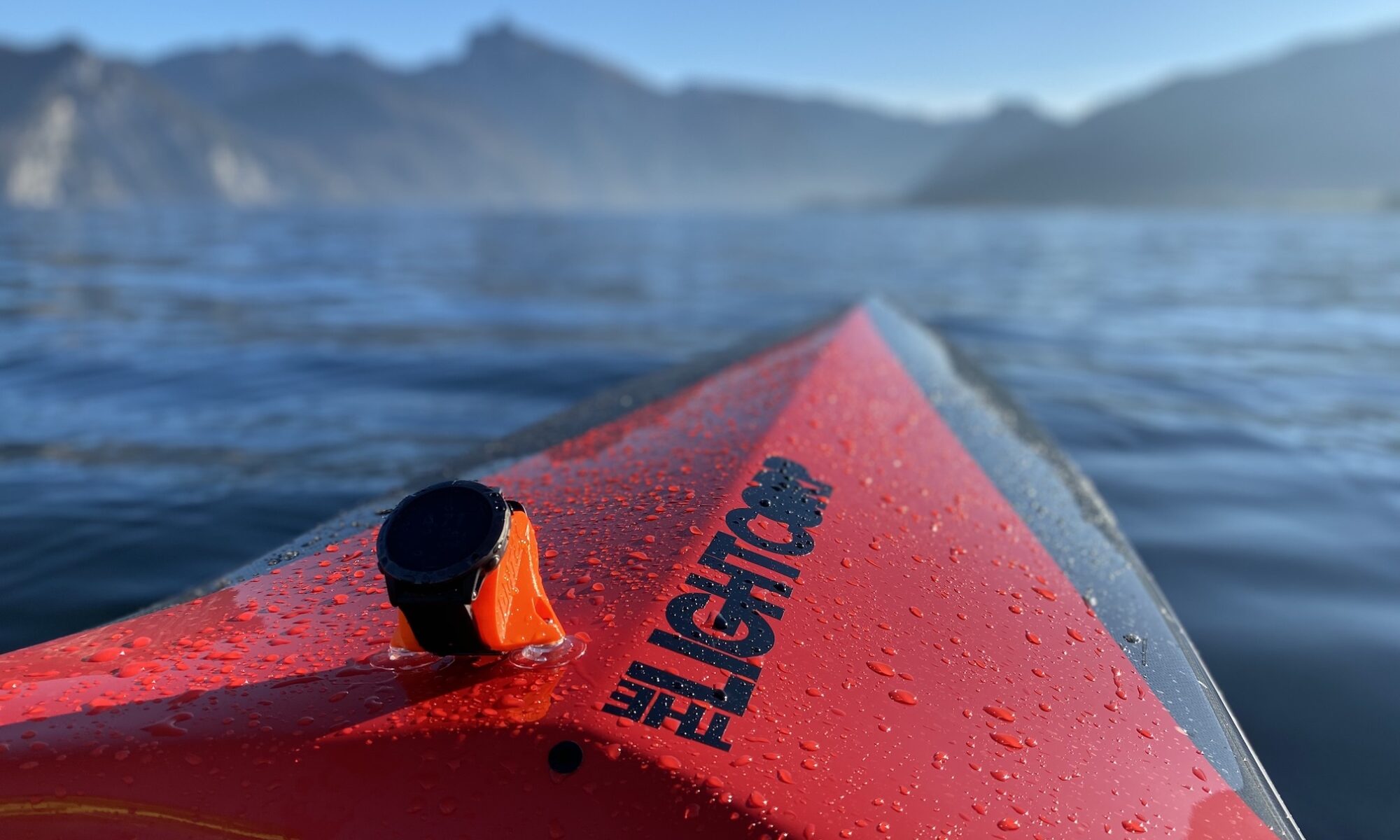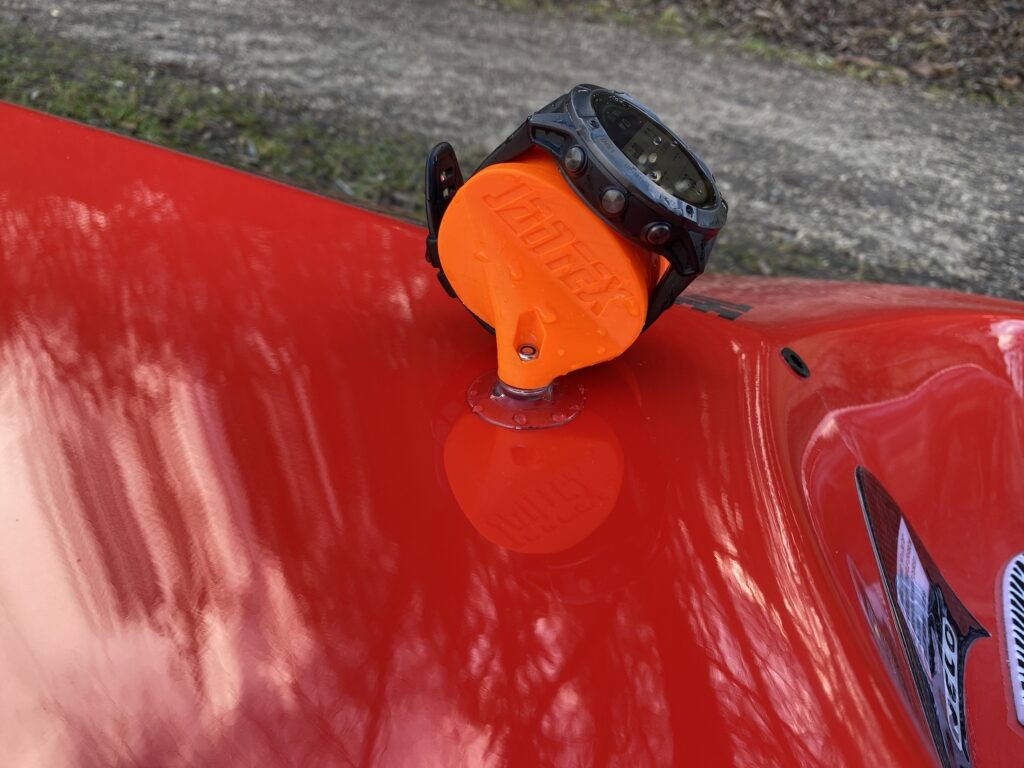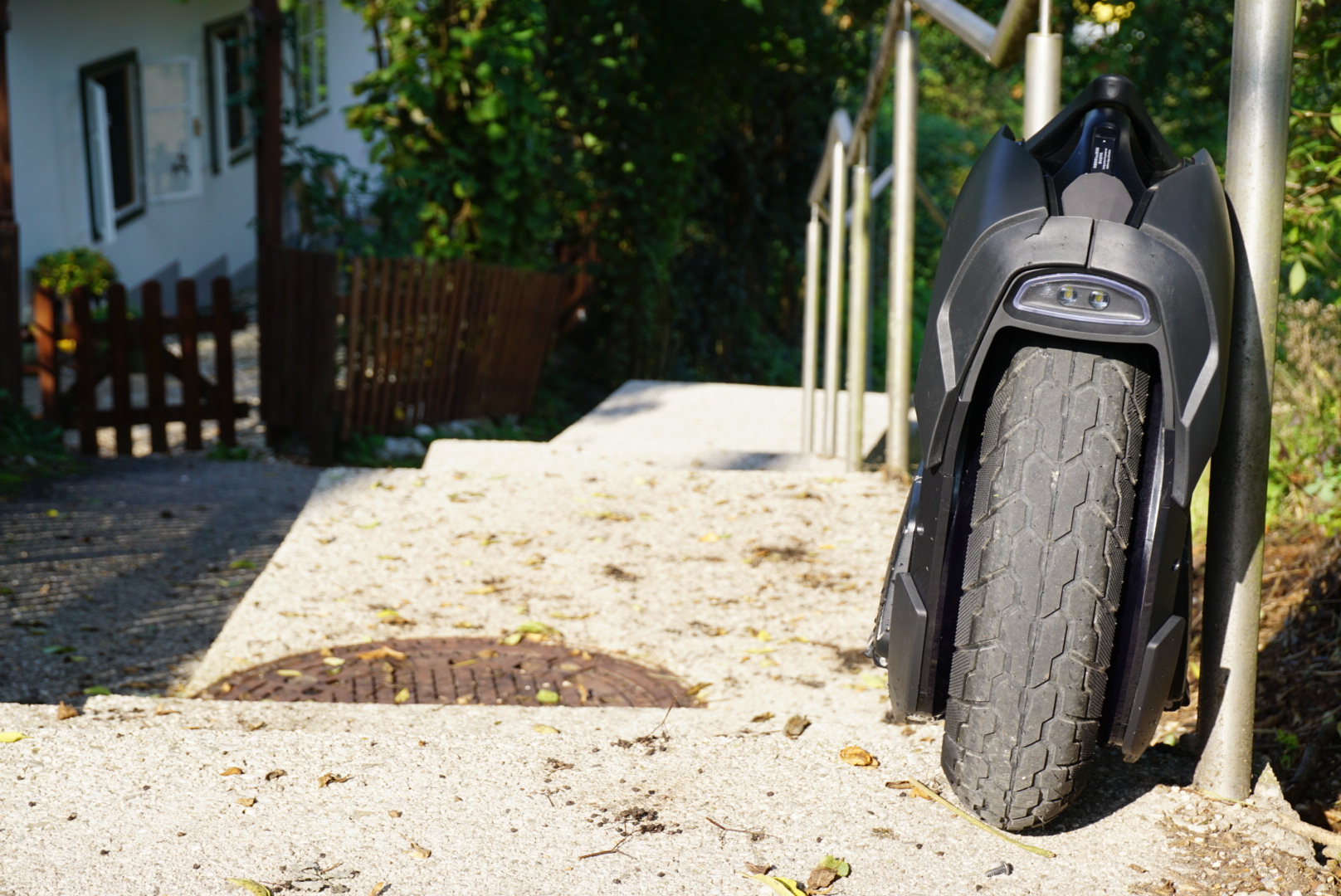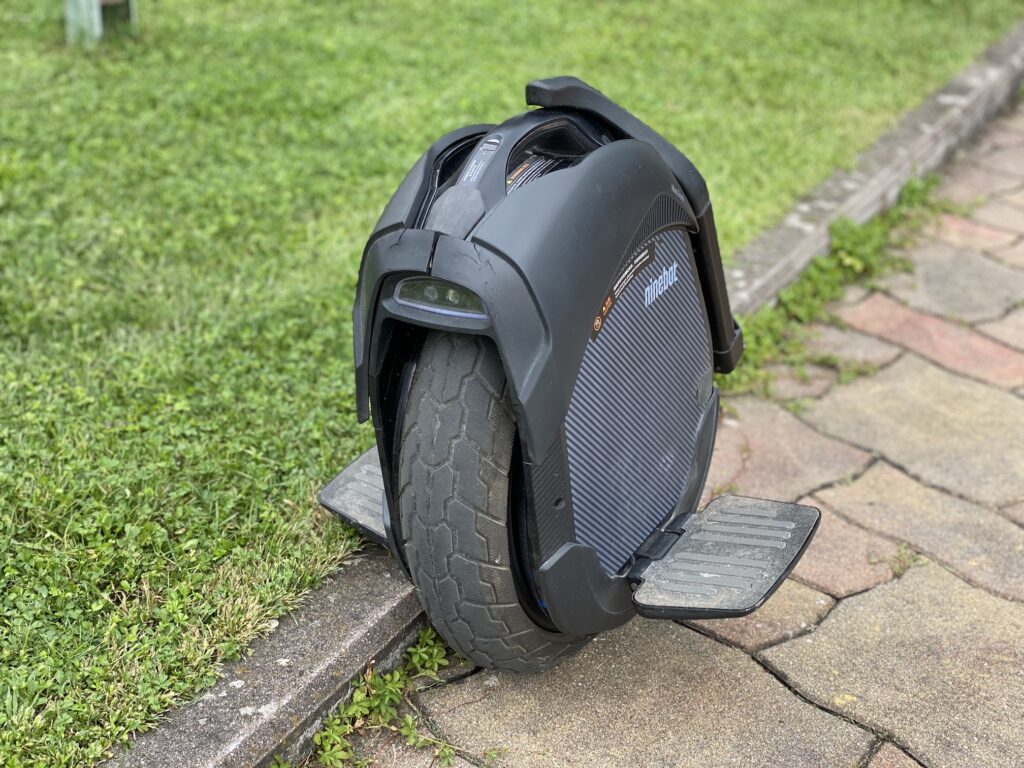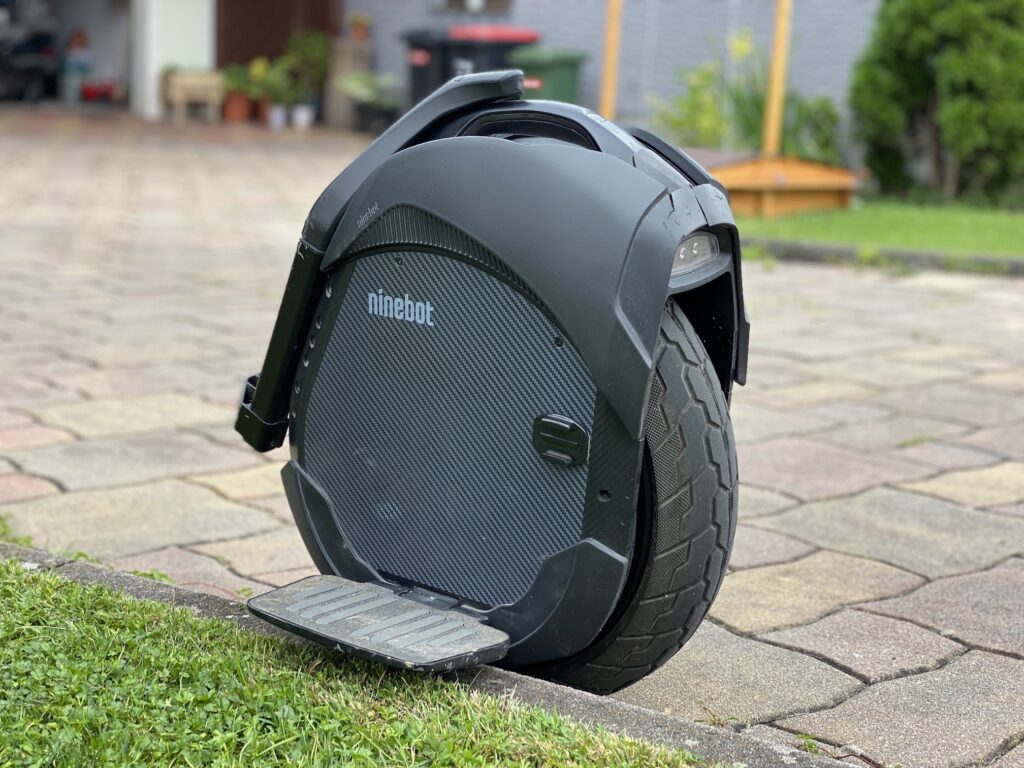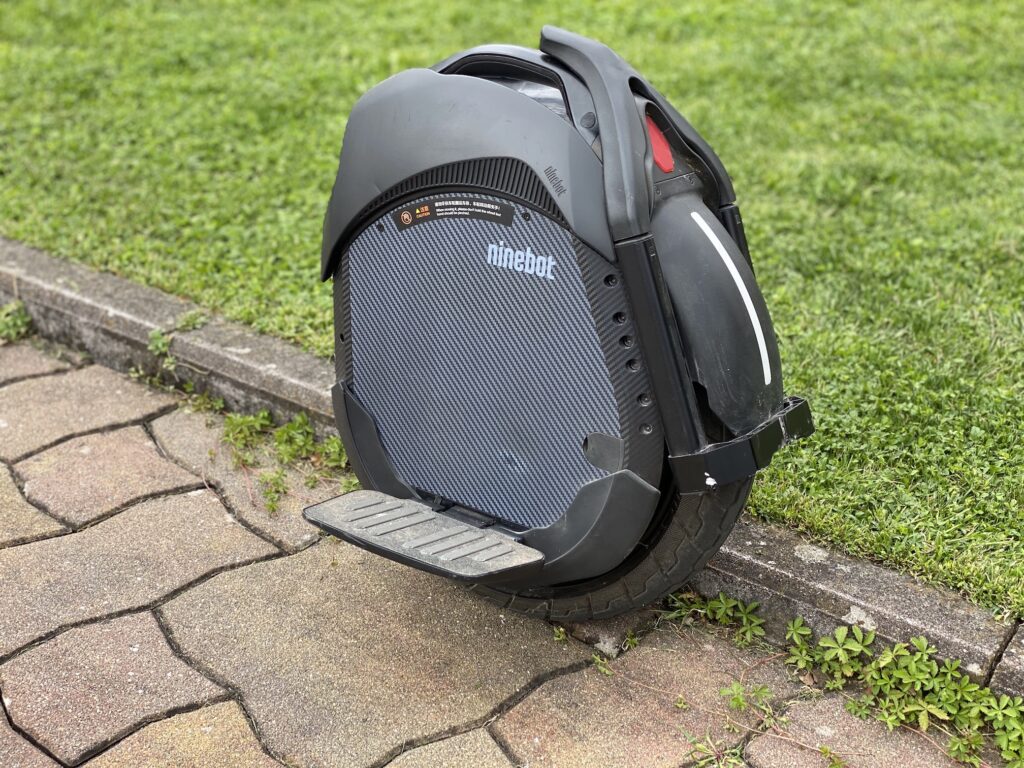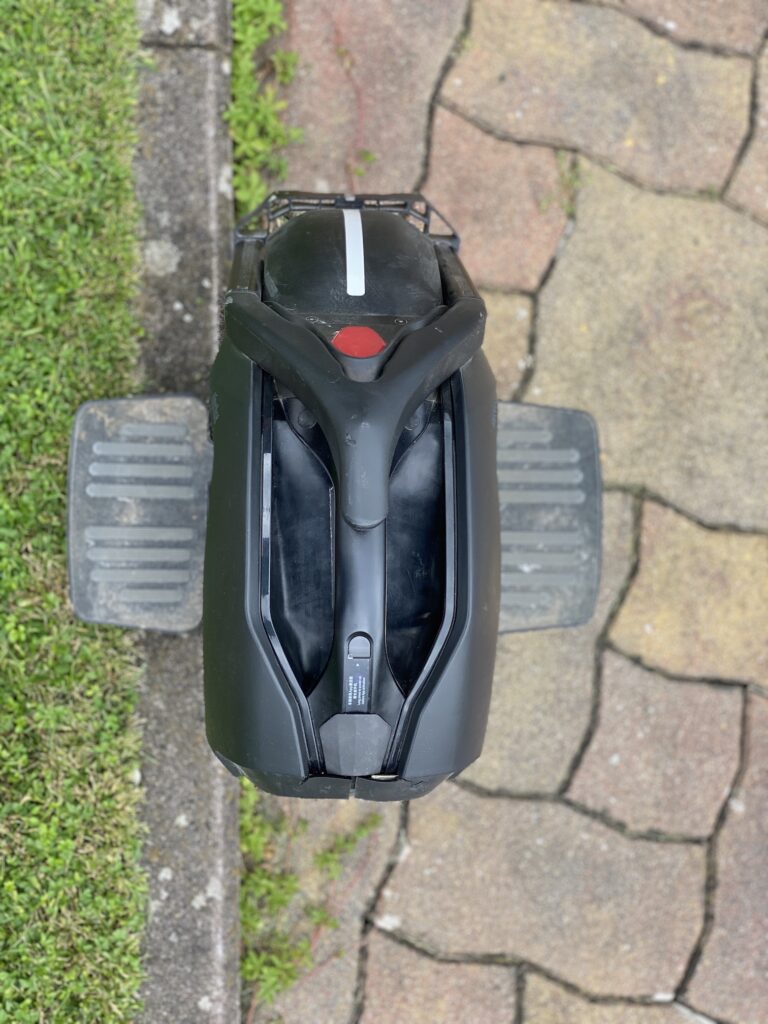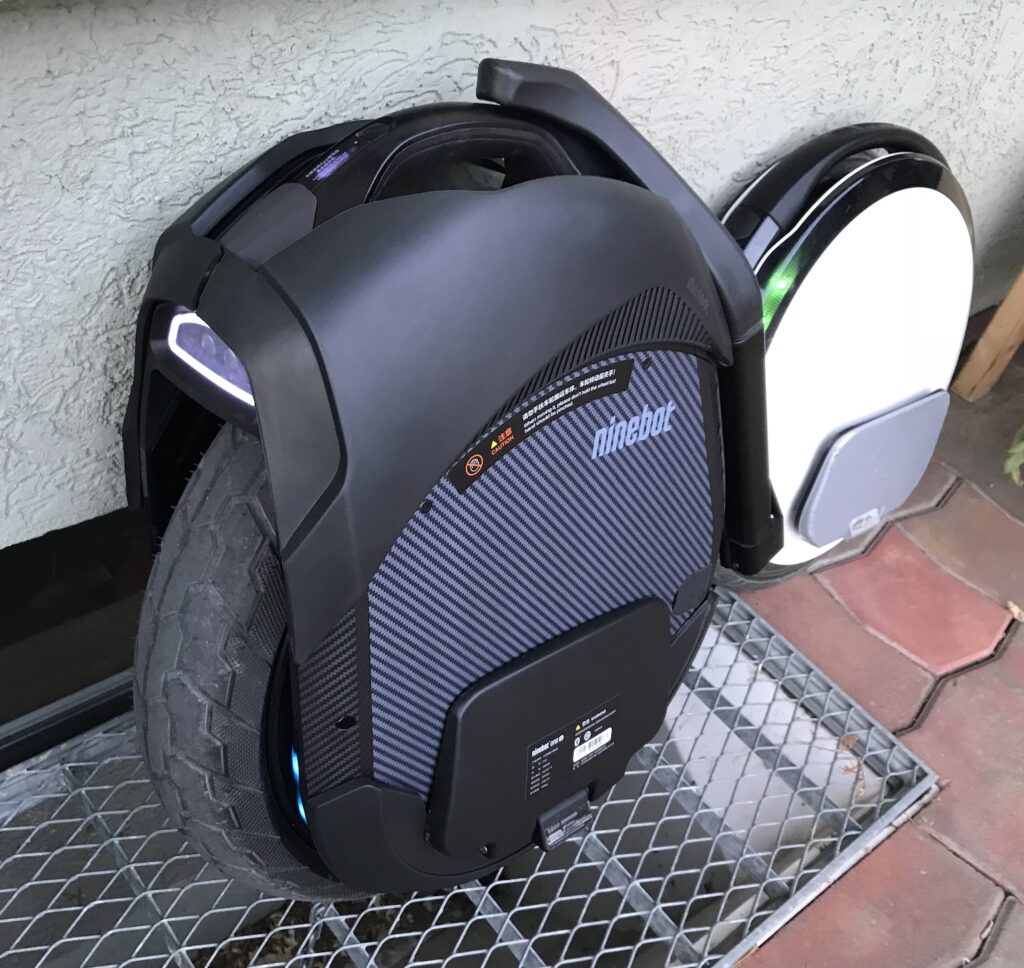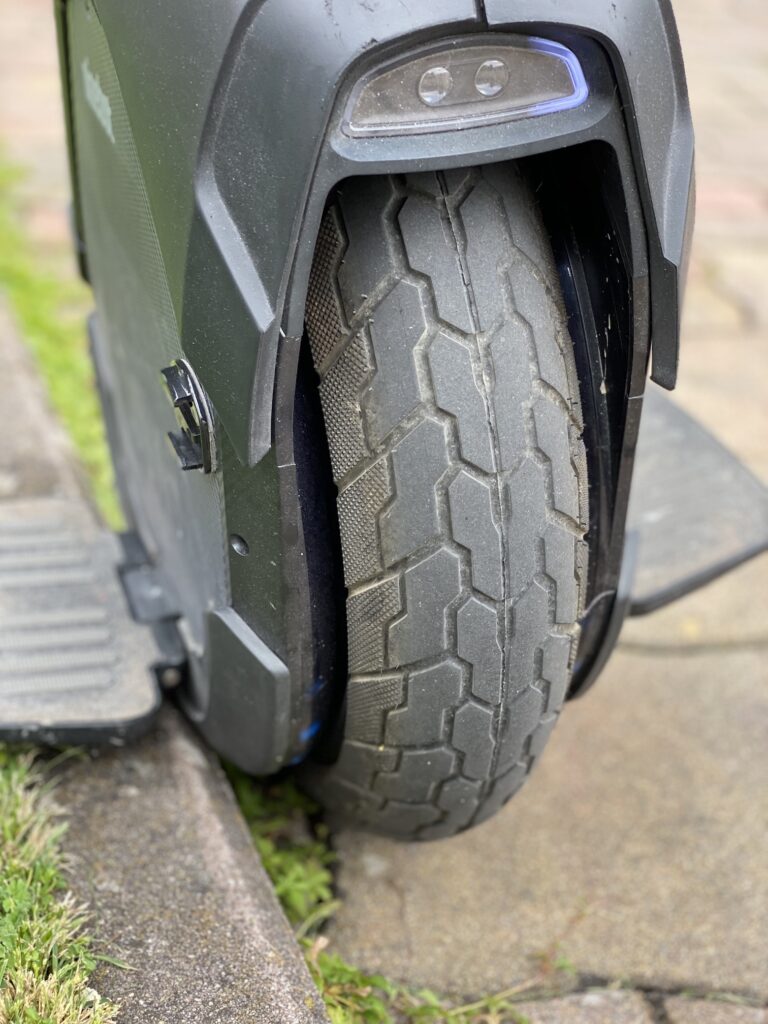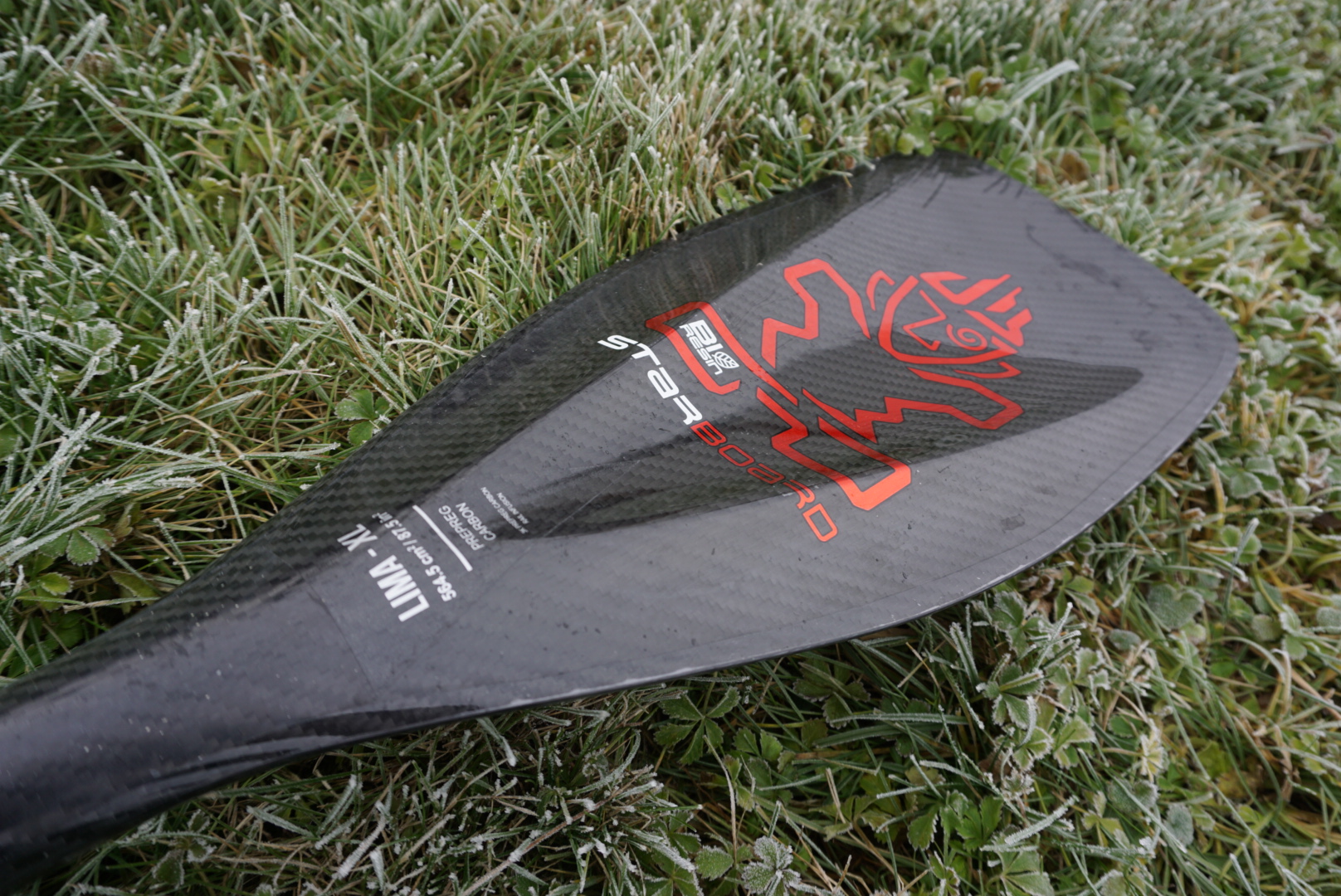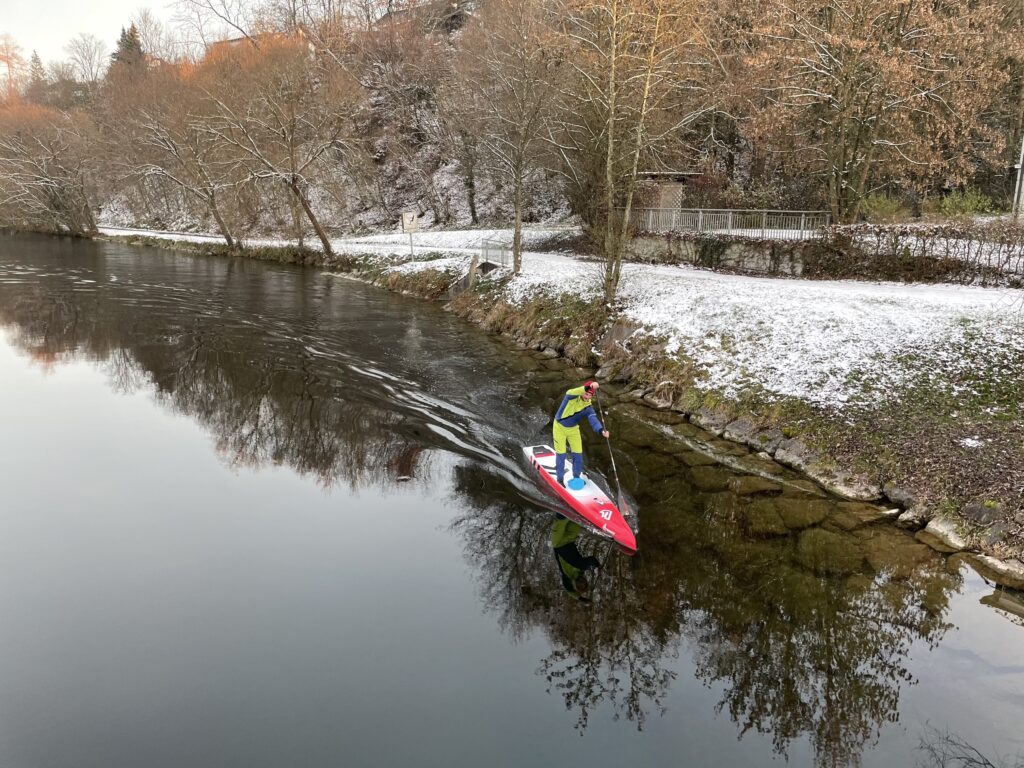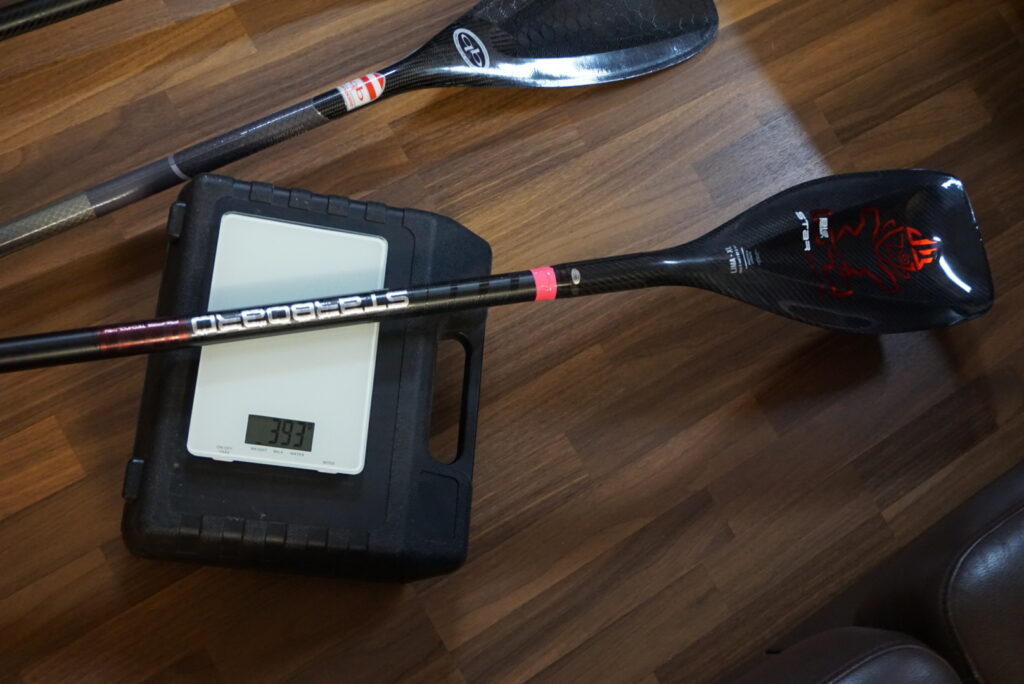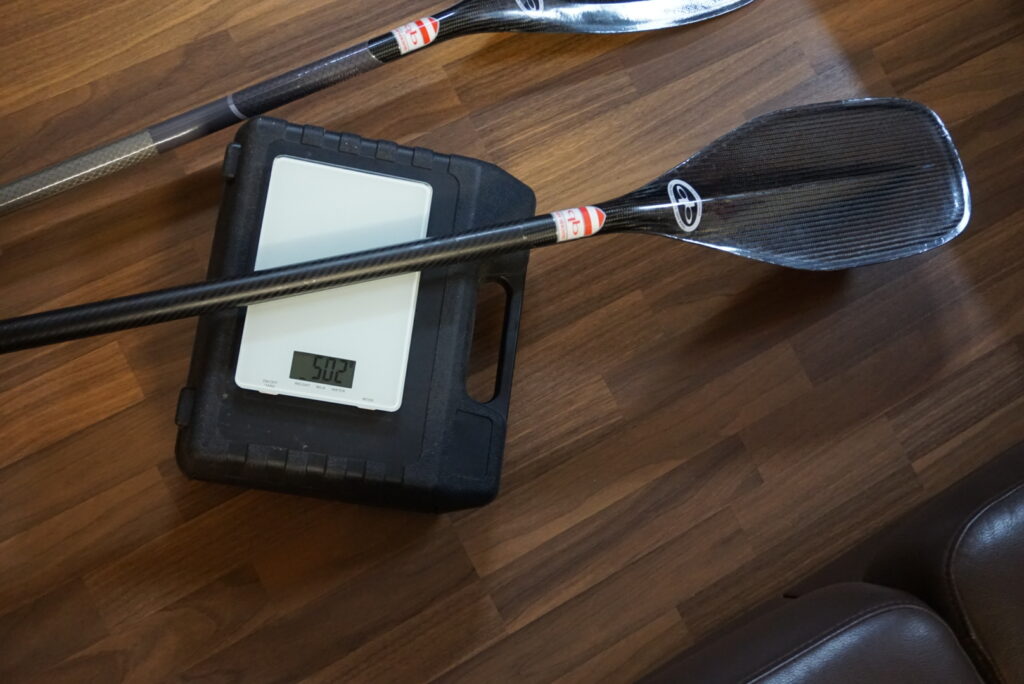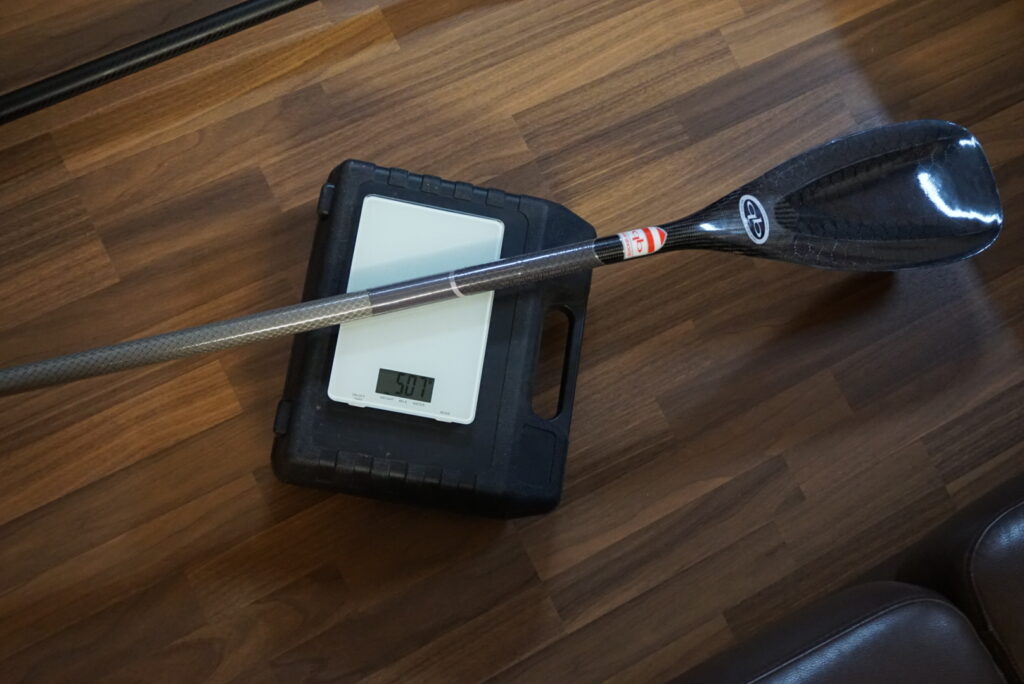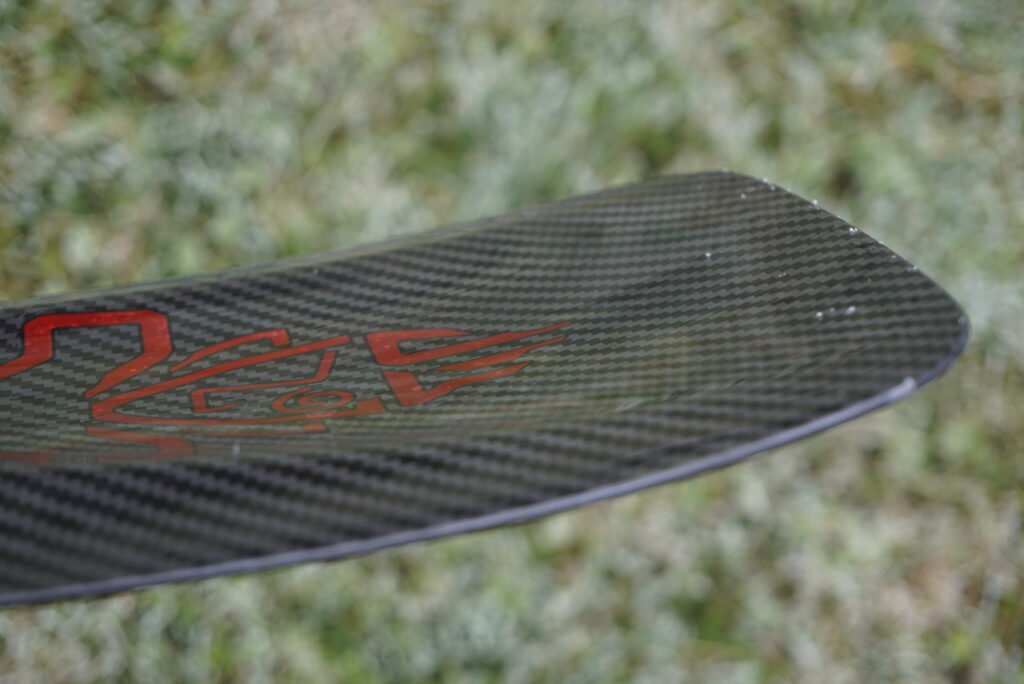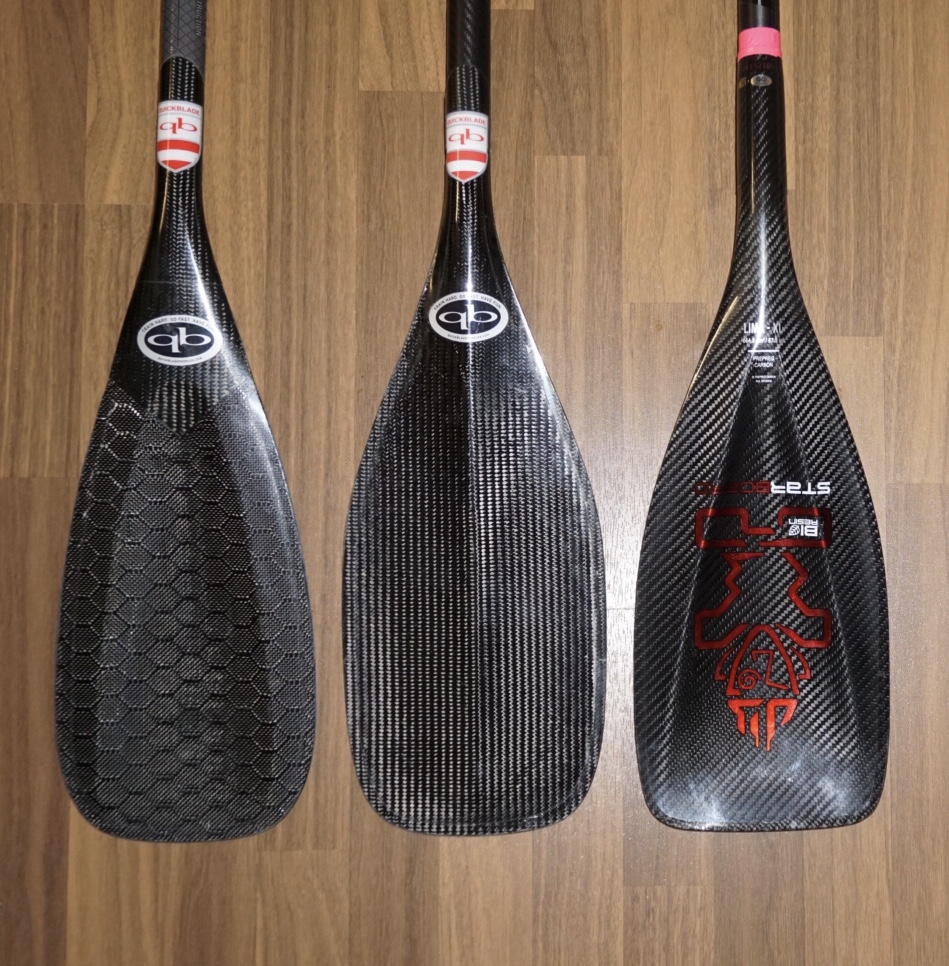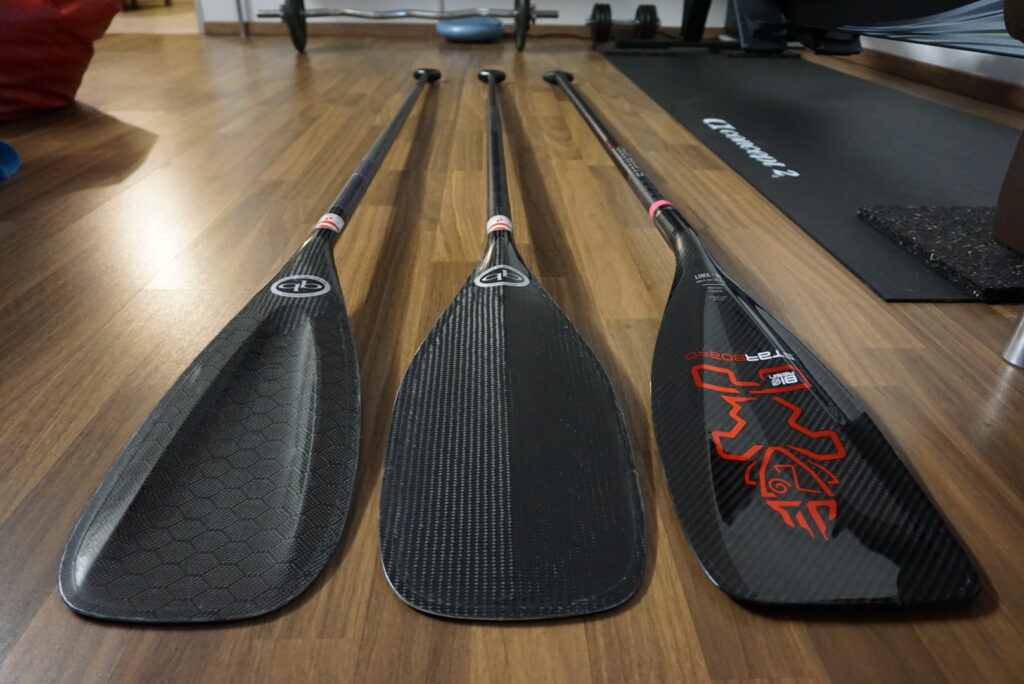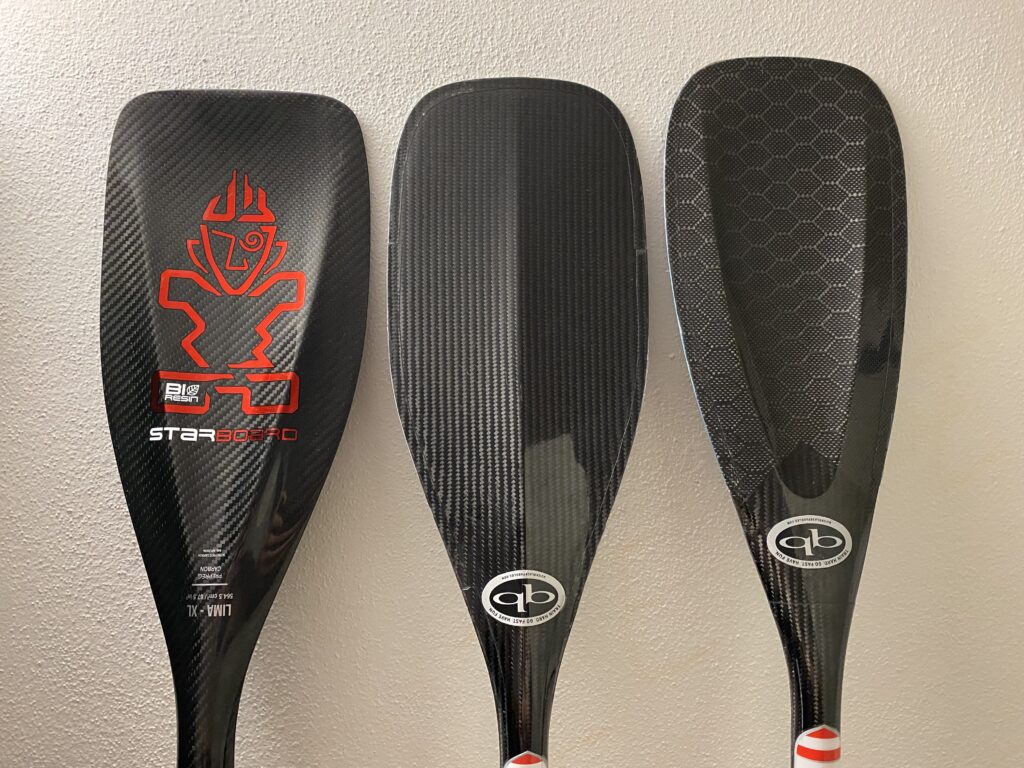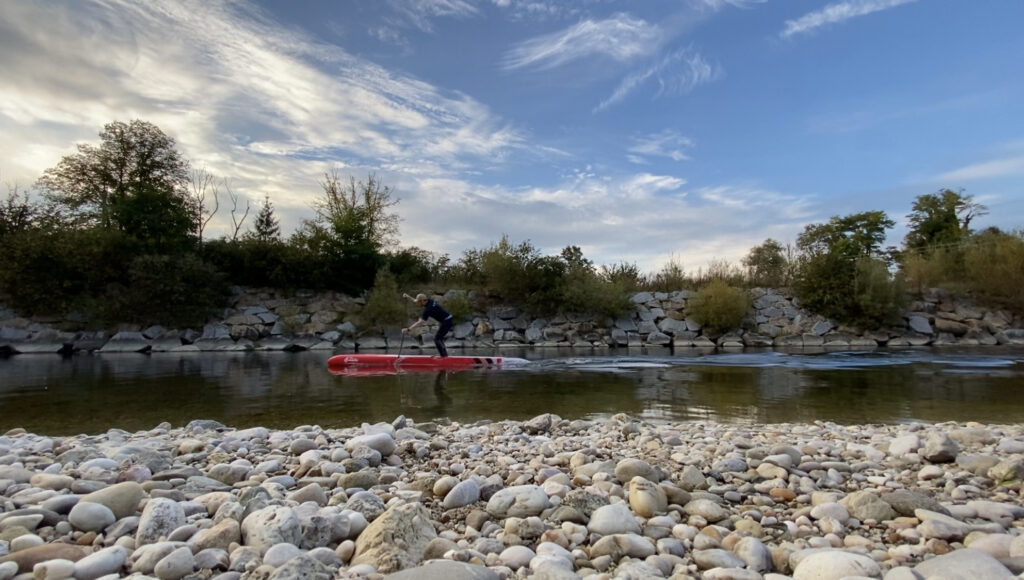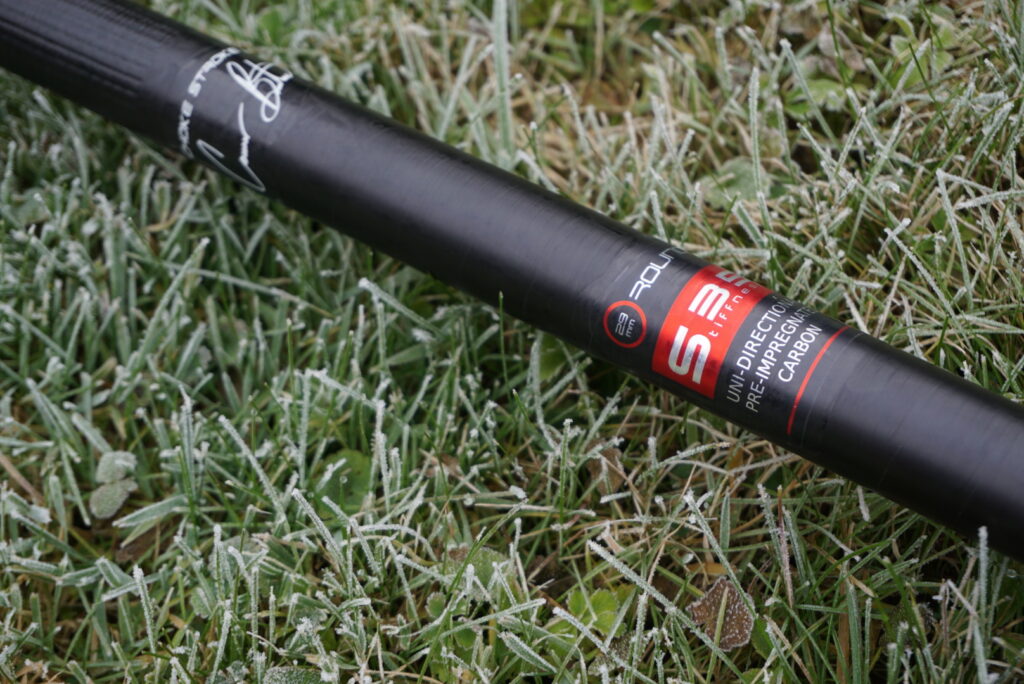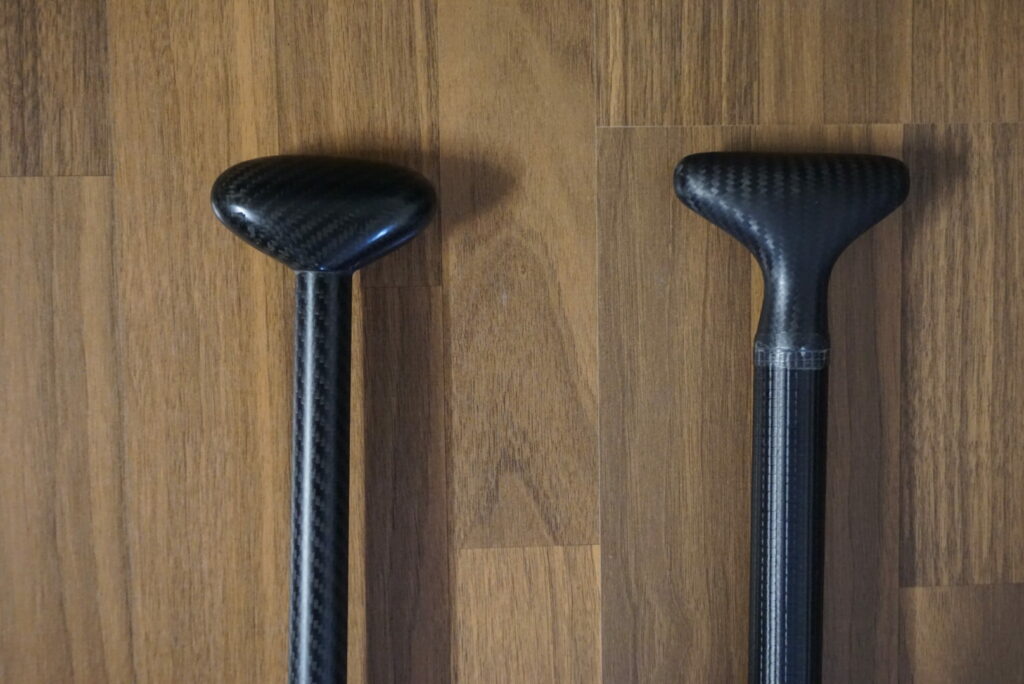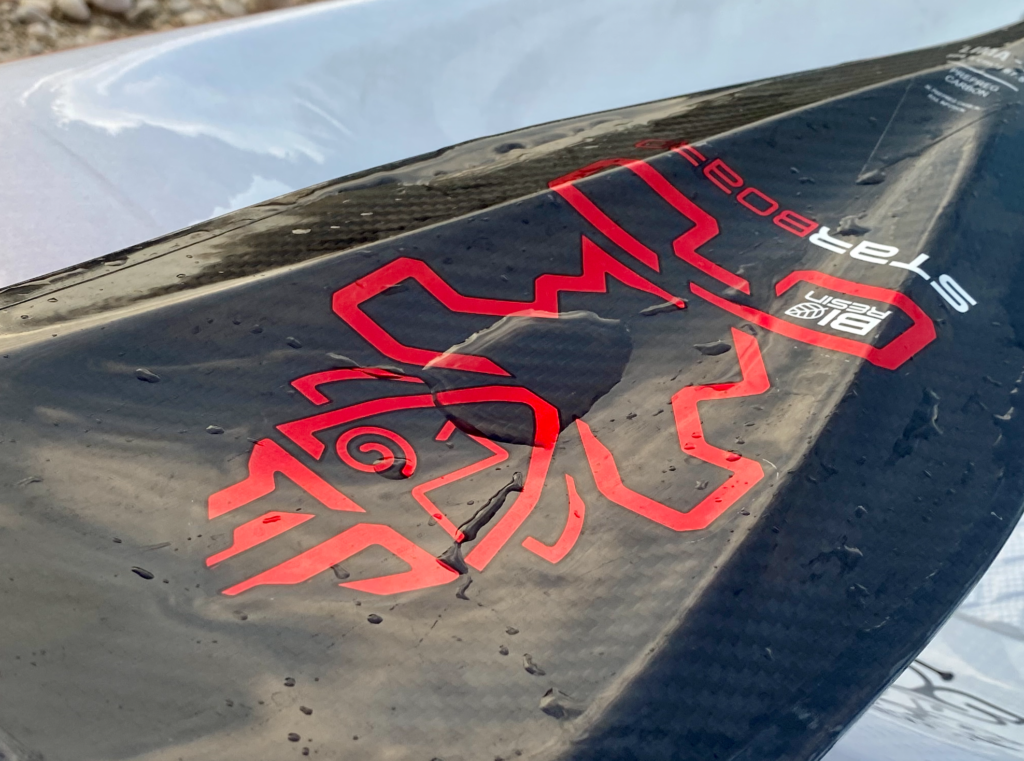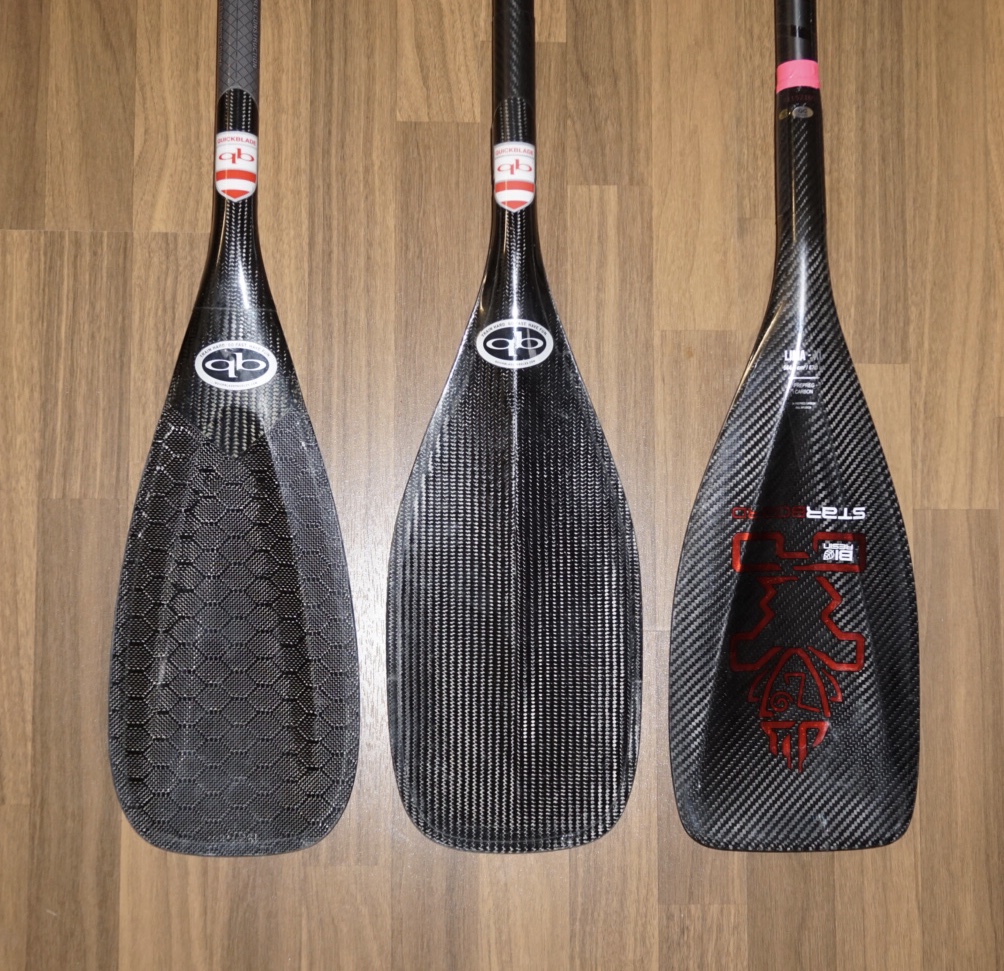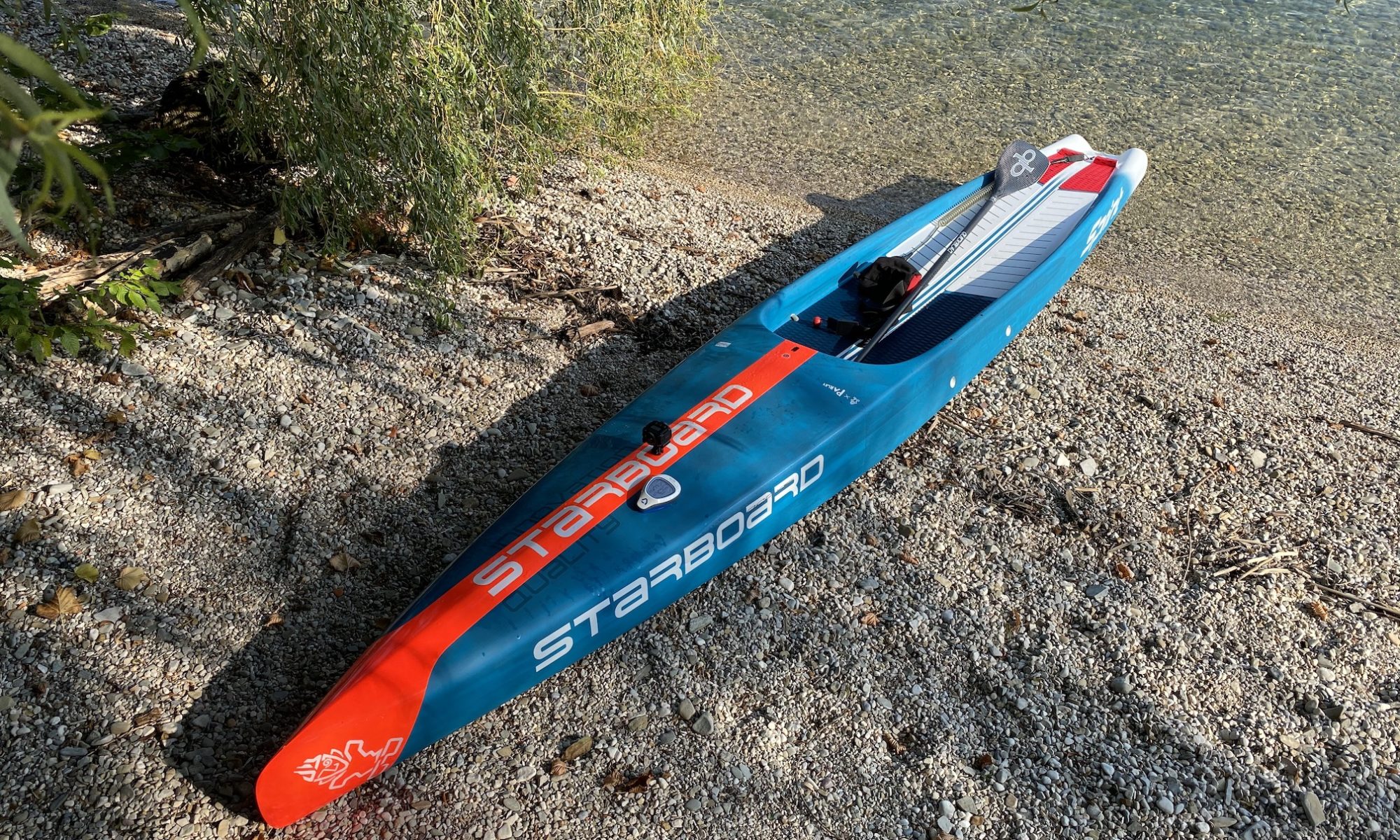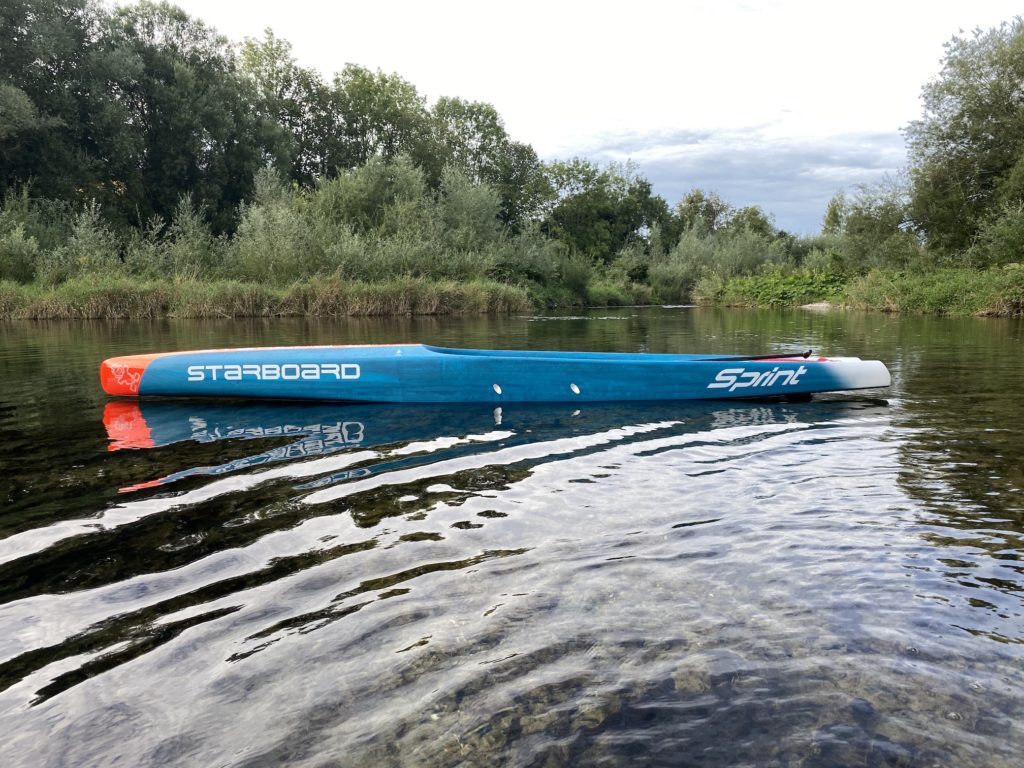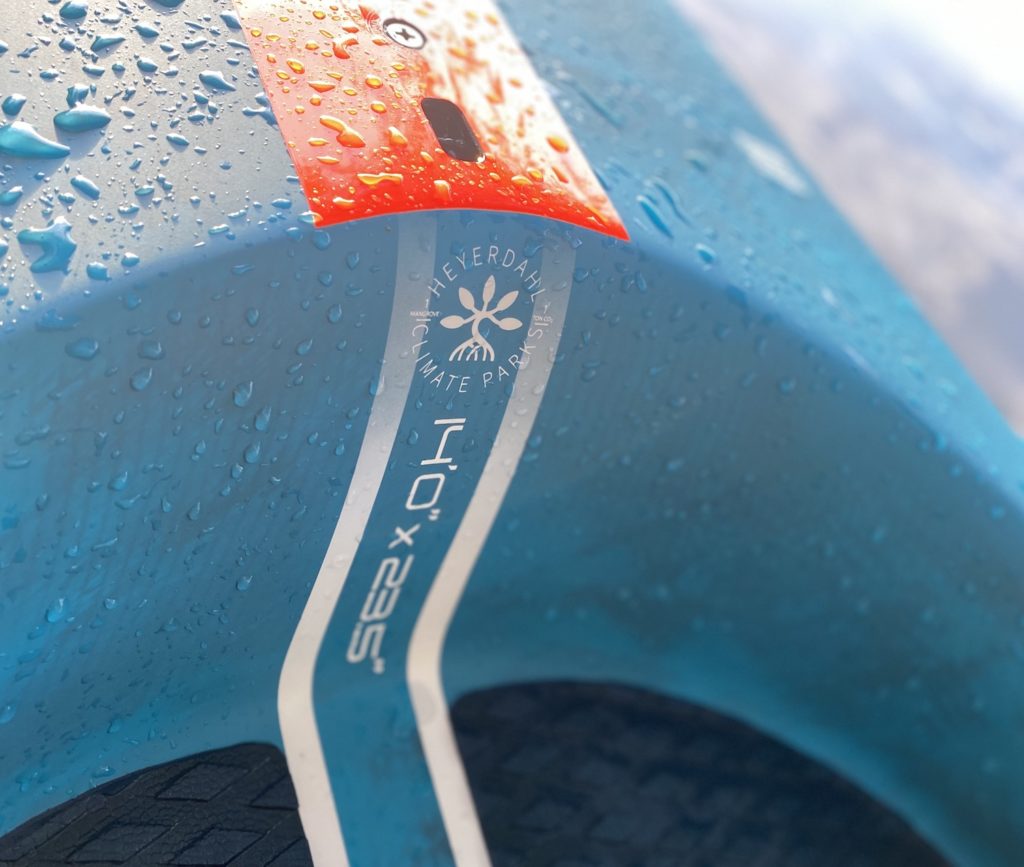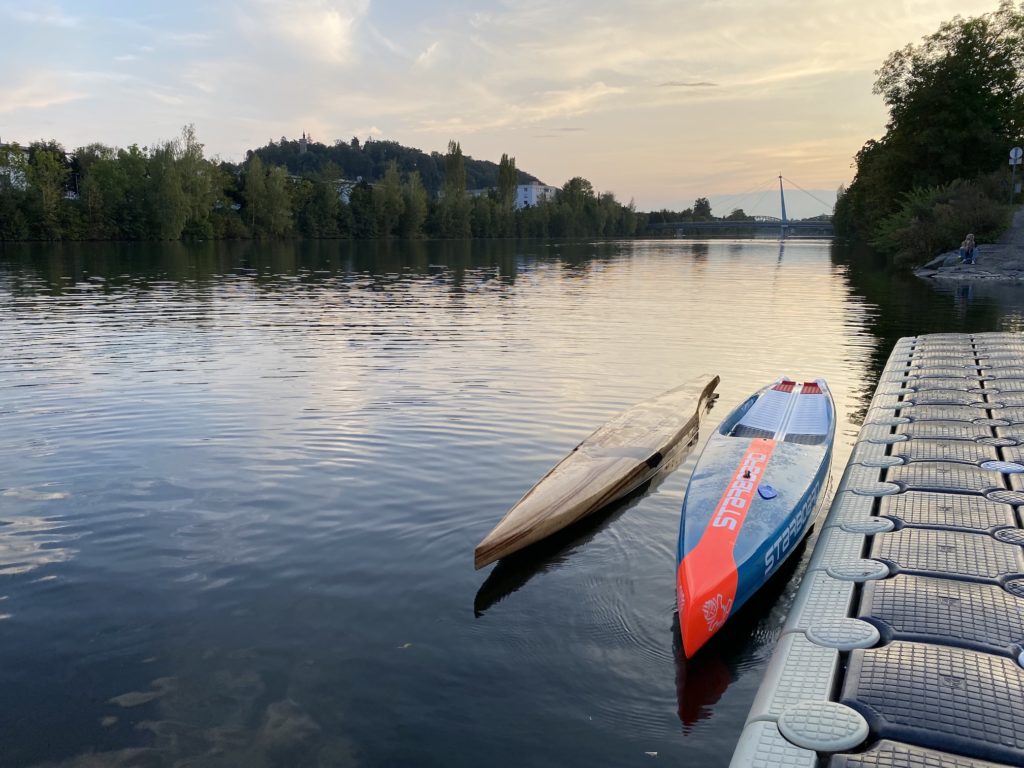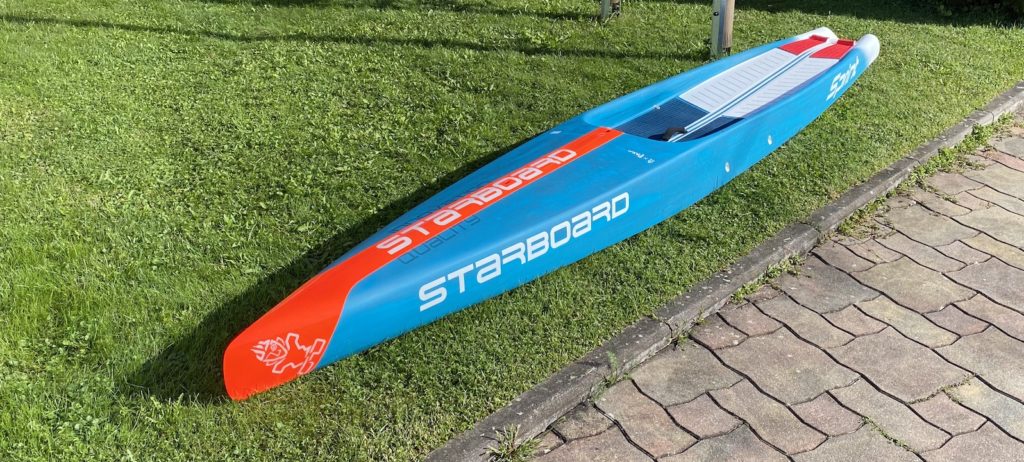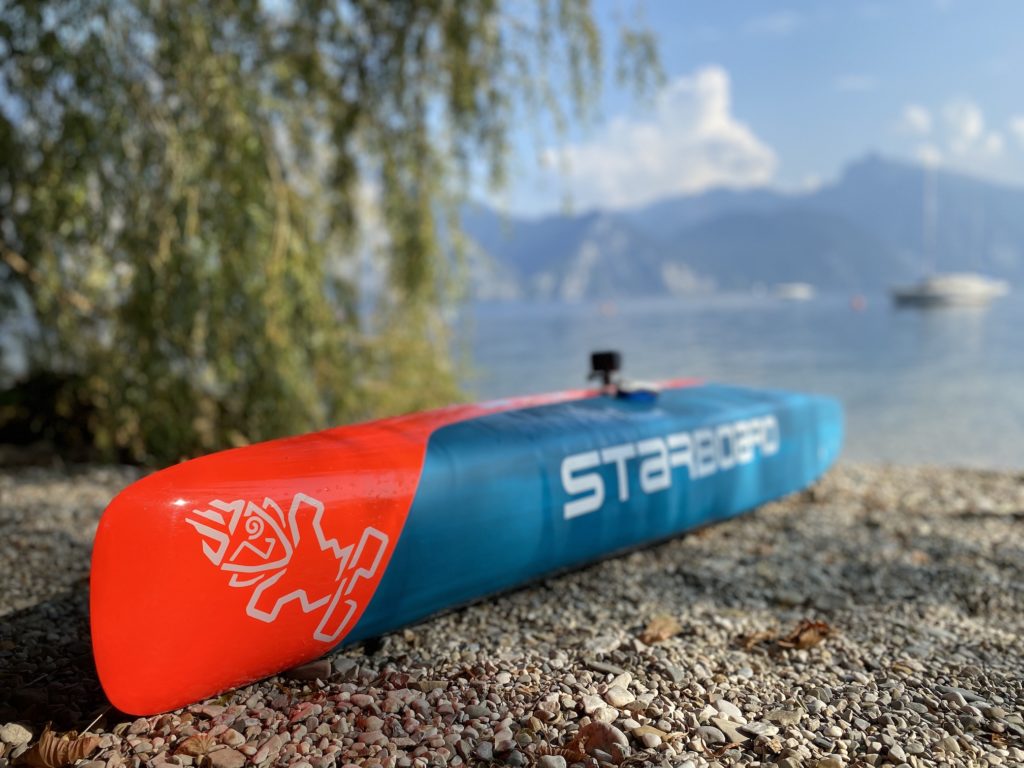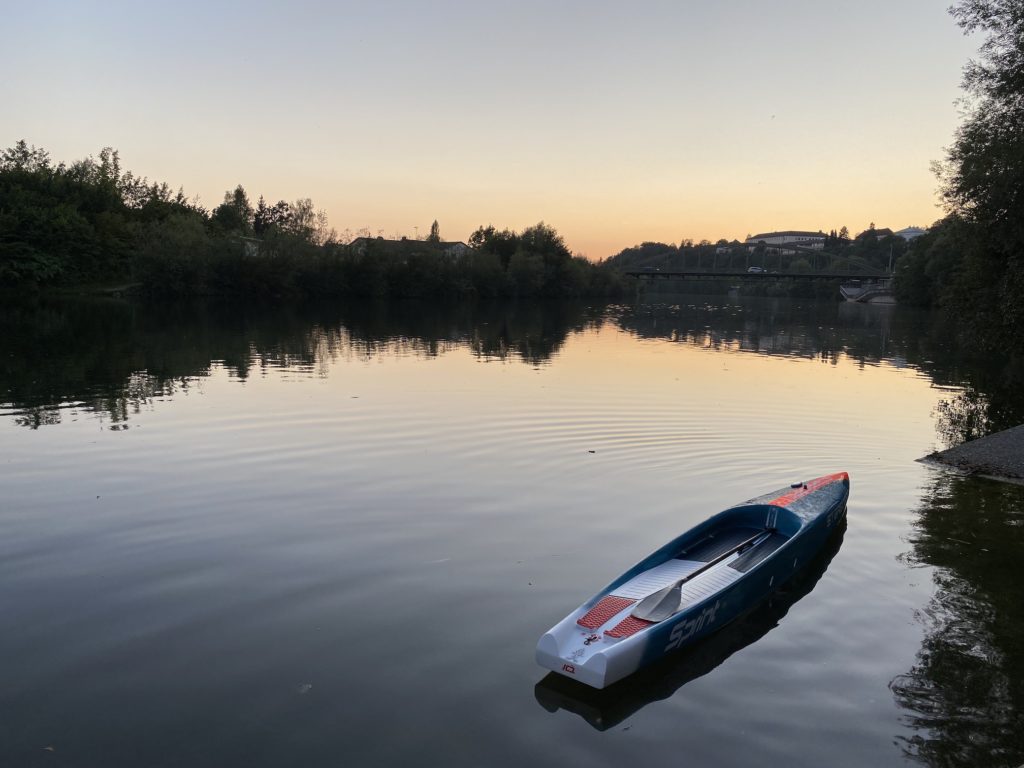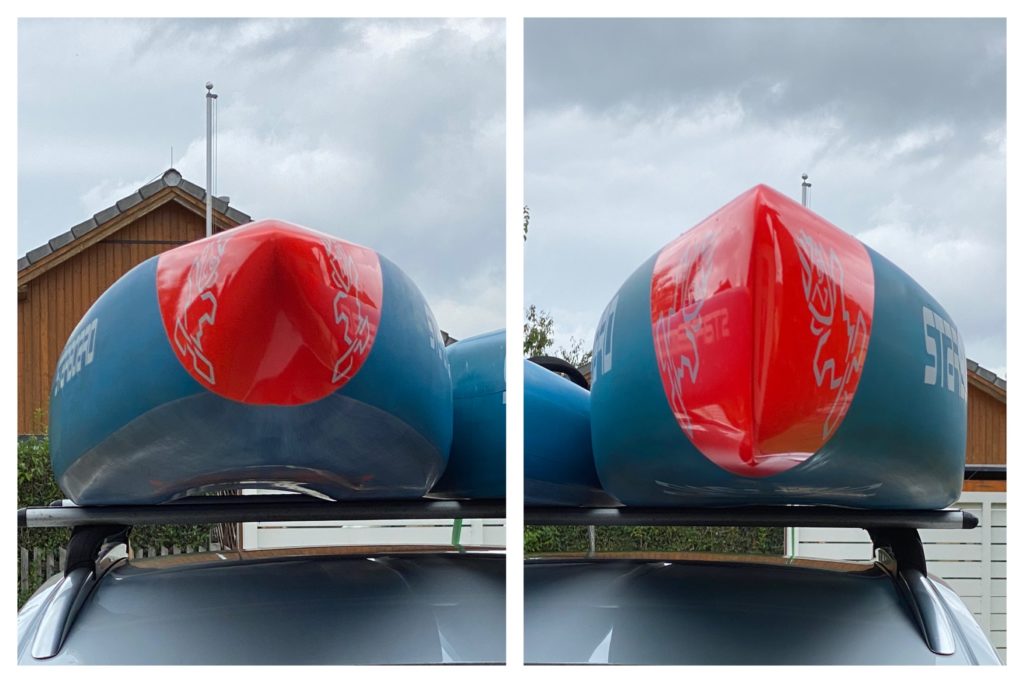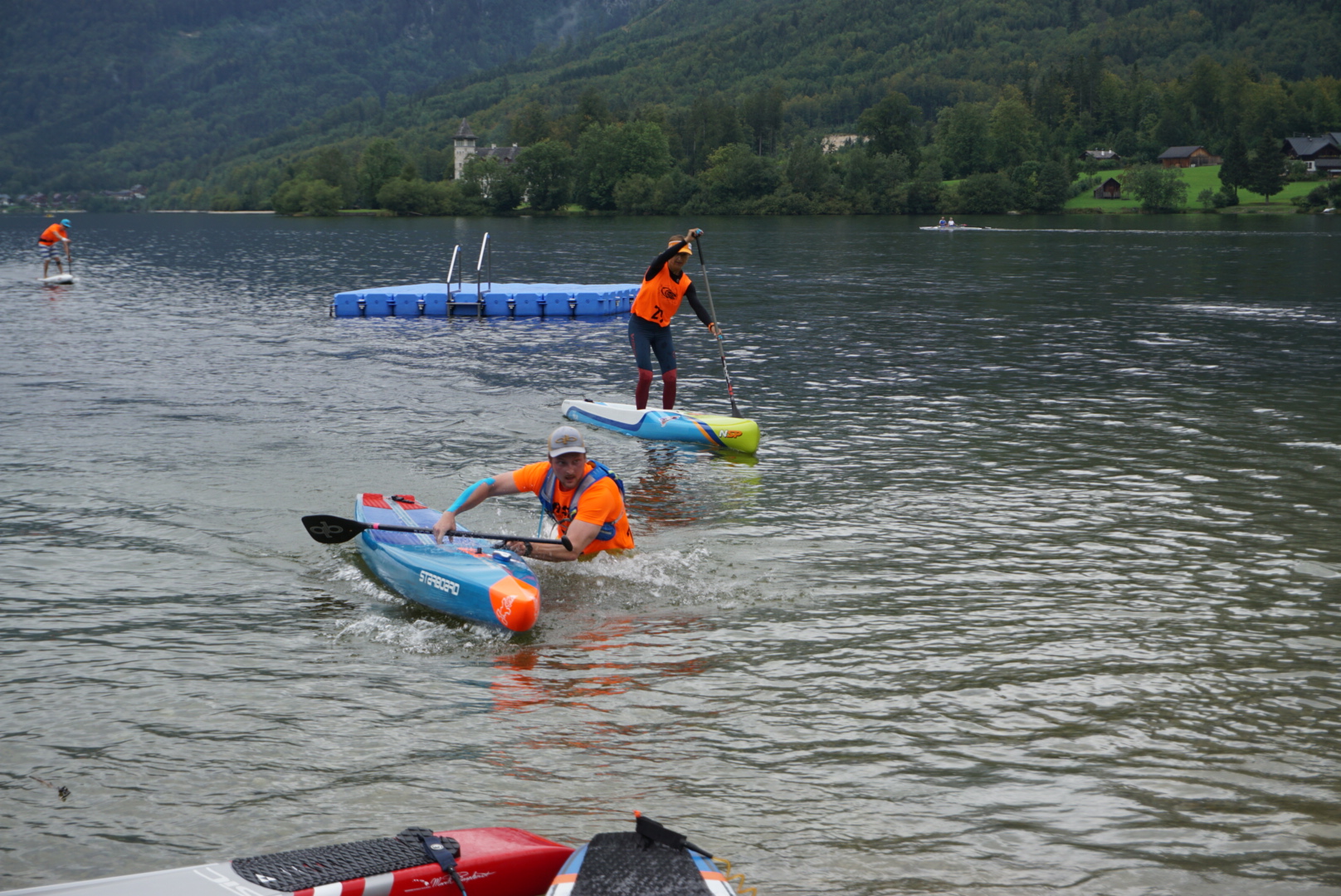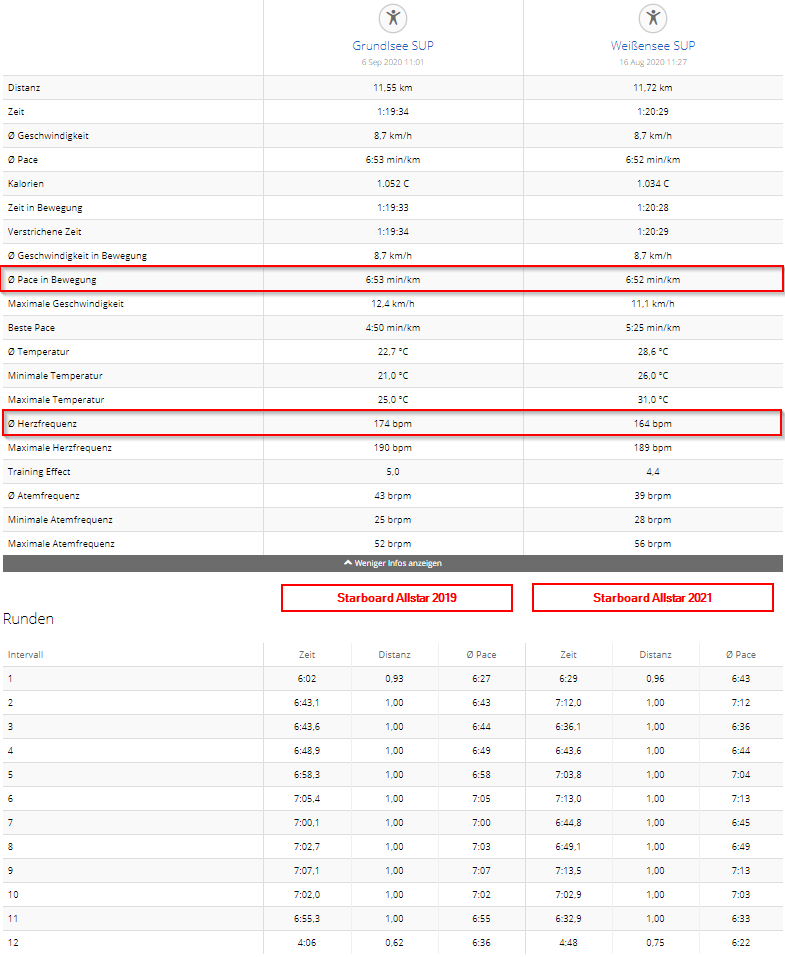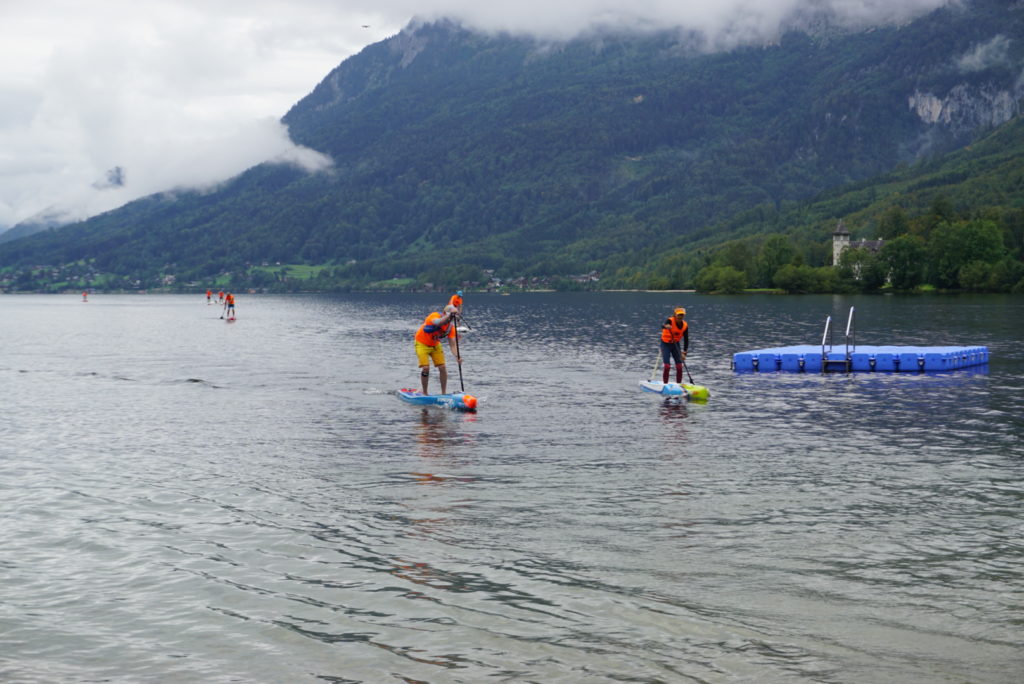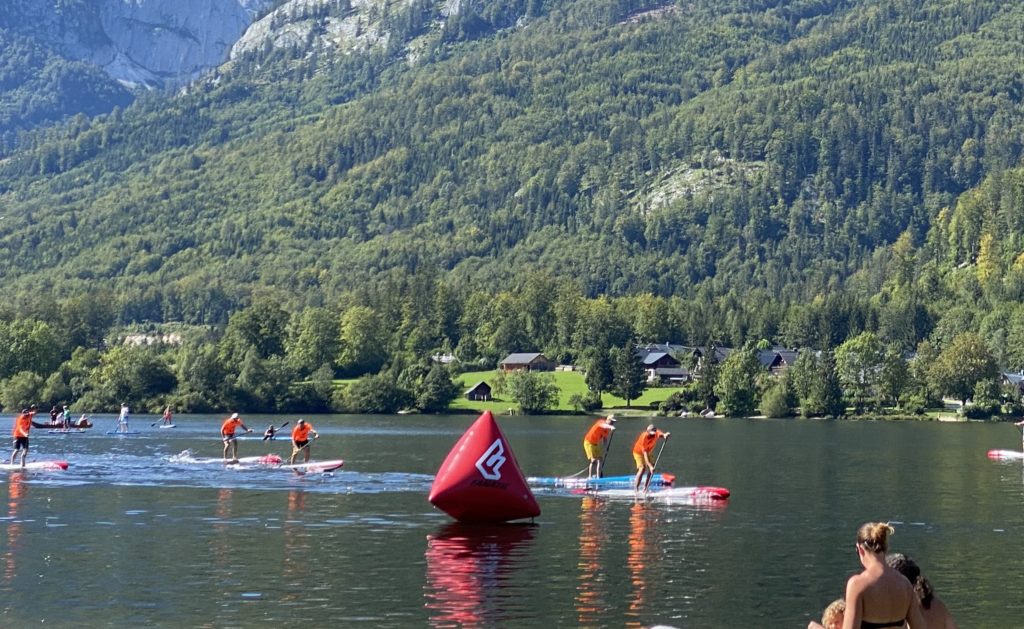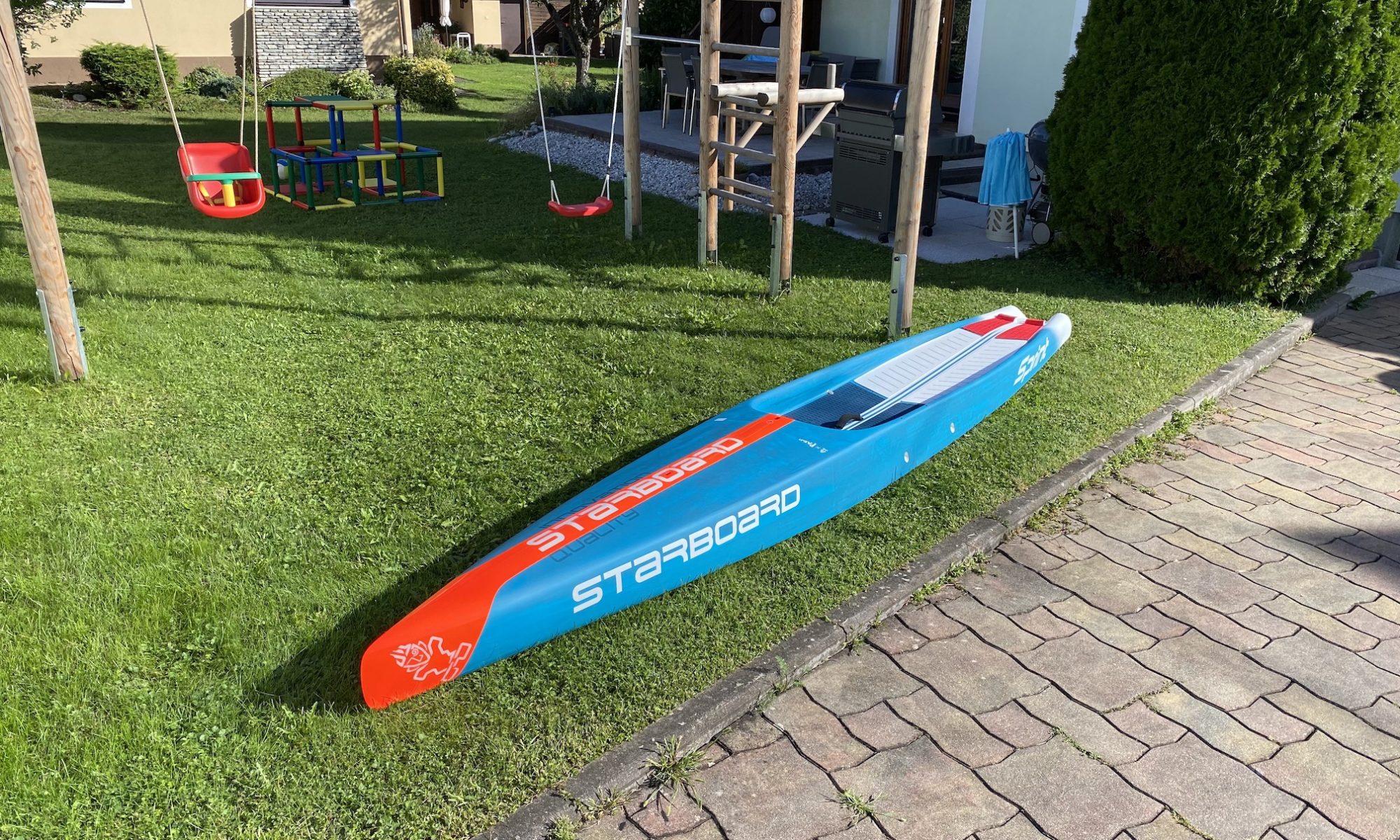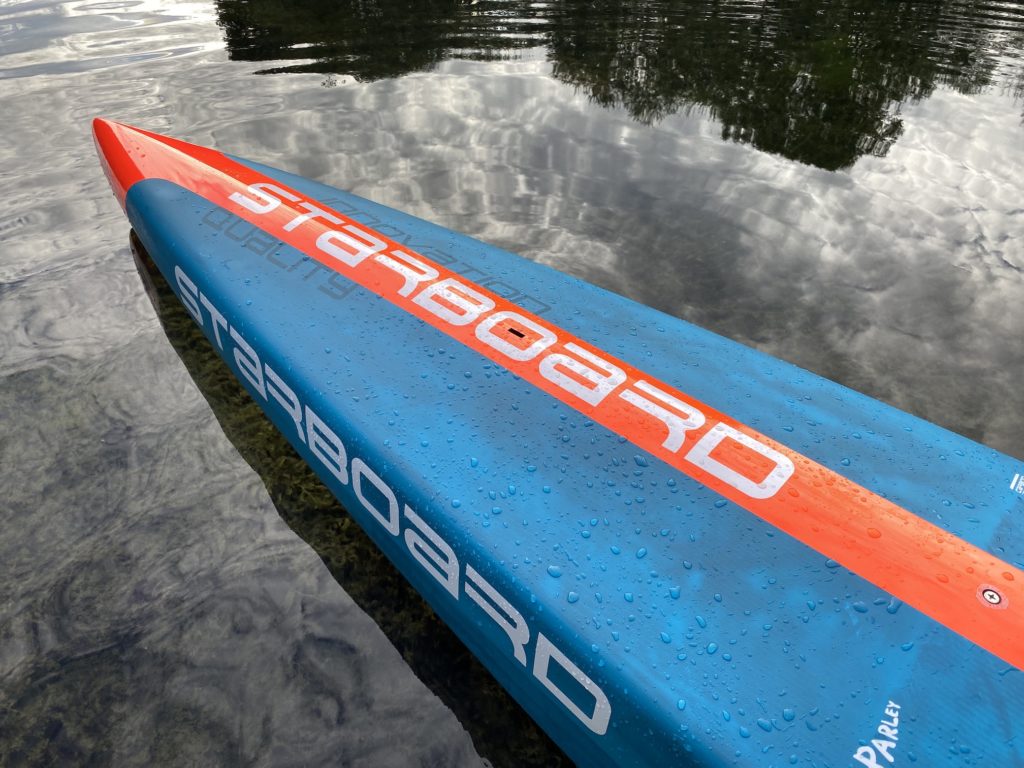Searching for the most capable Raceboard I could possibly handle at the end of 2019, I chose to invest in the most succesfuly raceboard of the austrian SUP Championship. Most teamriders went for the color wise updated 2020 Model which shared the exact same shape, so I decided to go for the 2019 Model in red&white design because I could get a better deal for it.
The Strike is a pure racing machine with incredibly high first stability and a lot of secondary stability. Helps a lot when trying to adapt to this board.
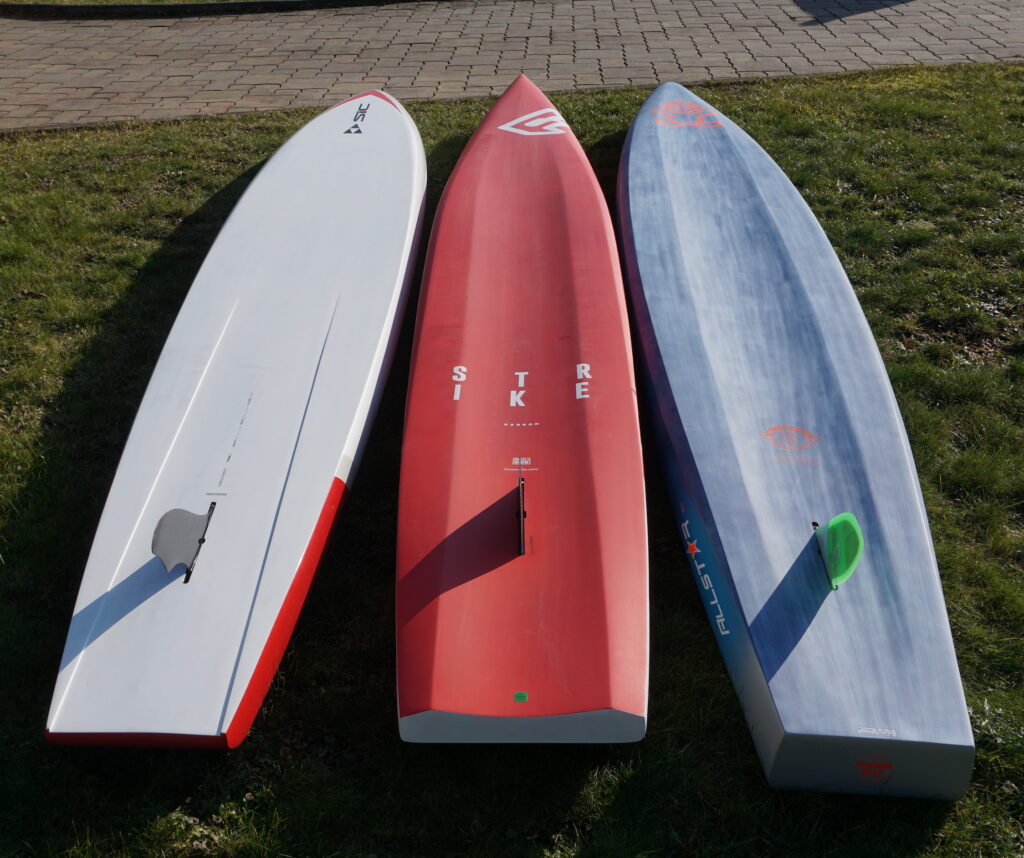
In the beginning it was hard for me to get a comfortable standing position, that would let me transfer power to the paddle as easy as with my SIC RS 24,5. As skills got better, I felt comfortable to use the strike even for up and downwind sessions. But for sure I feel most comfortable, when trying to reach a new lap record at flatwater conditions.
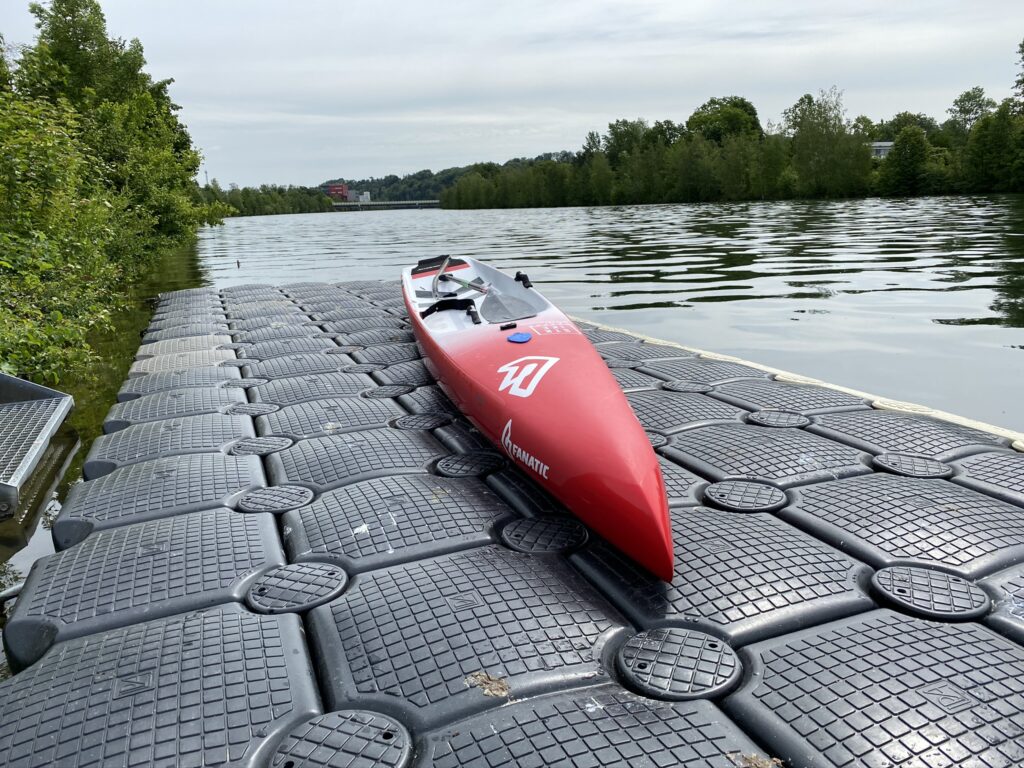
Stability vs riders weight recommendation
Over the course of a year, my body weight typically fluctuates between 88 and 97kg. Especially with a little extra belly bacon, it was noticeable that I had great difficulty moving the Strike in a relaxed manner. I think the Fanatic Strike 14’x21,5″ is perfectly suited for riders sitting in the 70-85kg area. As I’m definitely way above that, it needs a lot of force and high cadence to get this board planing. When paddling more casually, my high weight means that the ideal waterline is no longer given. Either the nose or the stern is then too deep in the water. The sharp edges at the tail should provide a clean and fast water release. Although I have to say that this requires some inital speed if you’re in my weight category.
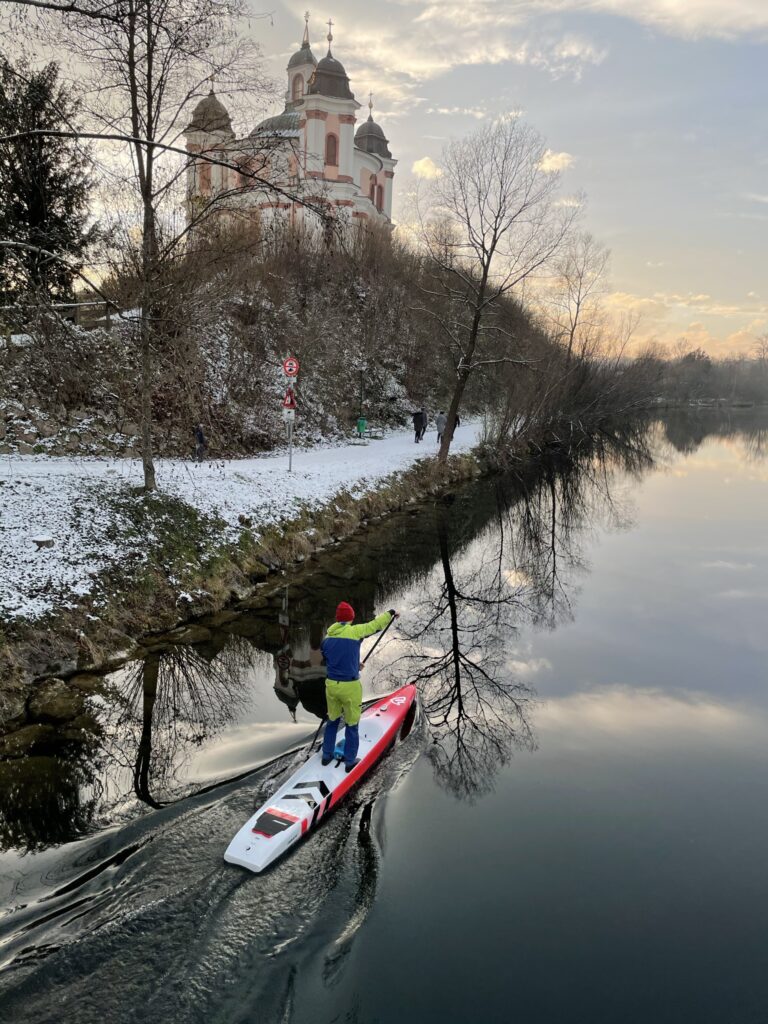
As stated before, the inital stability is great for such a narrrow board and I’ve been paddling wider boards that are far away from the stability reserves the Strike offers.
One thing where the Strike really shines, is its incredible stiffness.
There are many good carbon composite constructions in the market and for sure a dugout design will have an advantage in terms of stiffness. In this case, some composite boards feel like inflatables compared to the Strike! (for more… go to the end of this article)
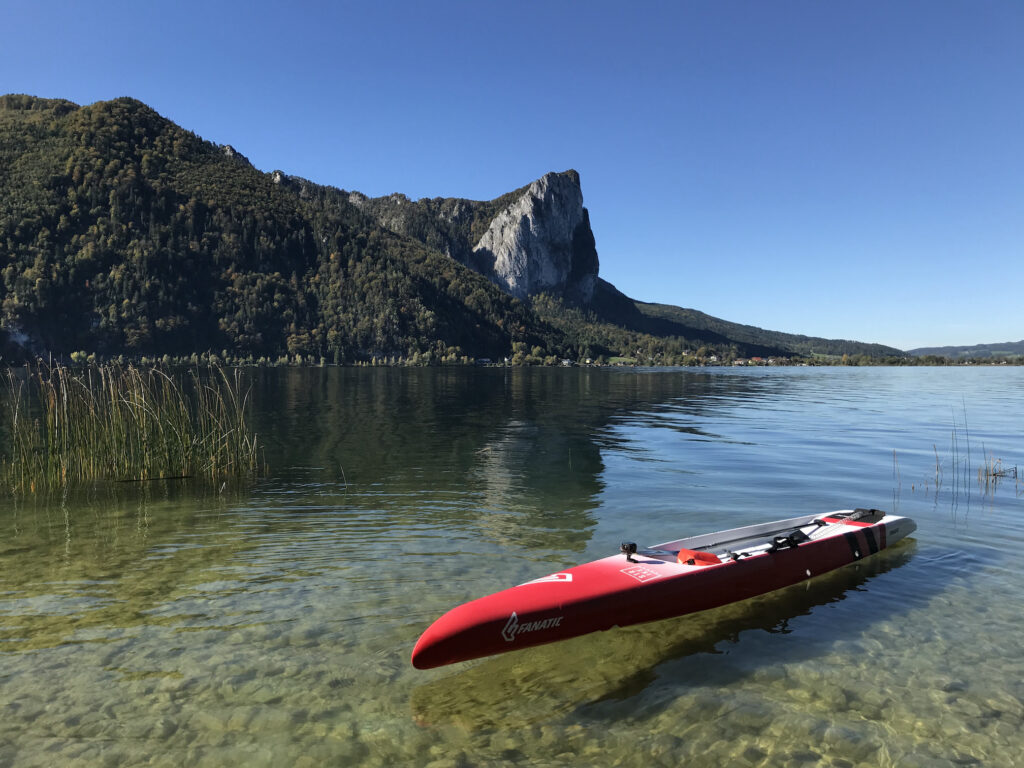
Punching upwind sends the nose wavepiercing and with its 274liters , there’s plenty of volume for most conditions. Upwind, most Allwater boards with lots of volume in the nose tend to slap against following waves, with the Fanatic Strike you mostly cut waves like a hot knife through butter.
If things get really nasty and water enters the deckpad, the drainage holes are working great. Only when trying to deal with side chop, my abilities aren’t up to what would be needed. When performing step-back-turns, the wide tail lets you move easily back to the kickpad, without compromising stability. On the other hand – you will have to do that, to get the wide tail sinking.
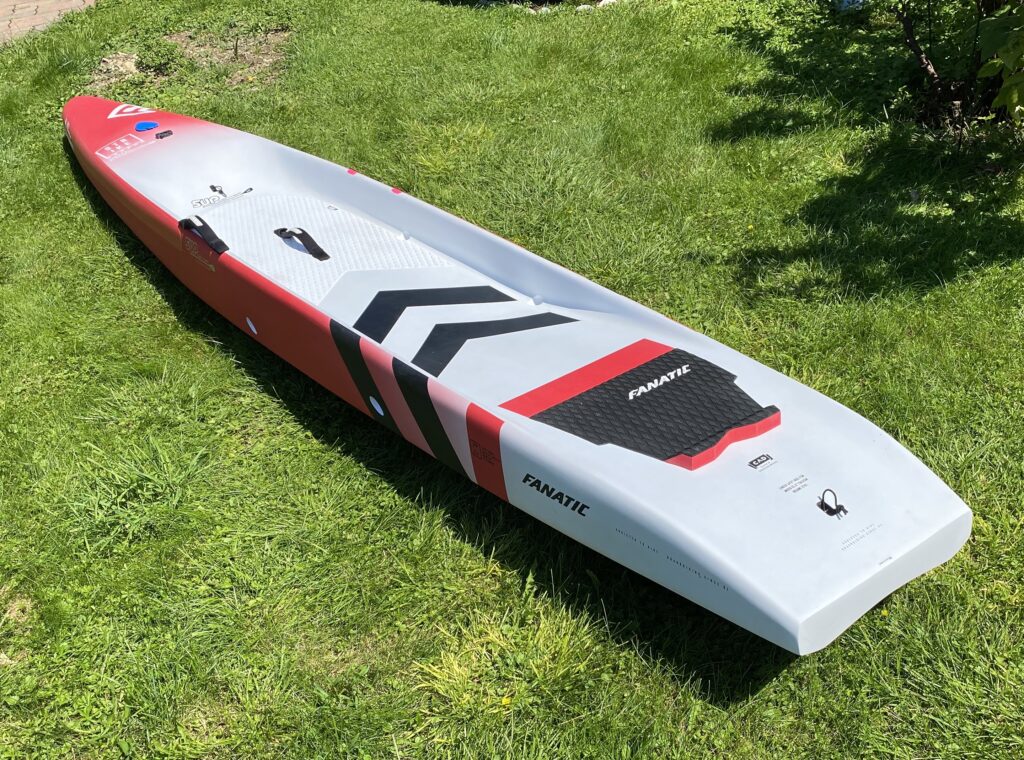
Comparing the Strike to my Starboard Sprint 2021 14×23,5 , the Sprint is a bit more stable but when comparing it to the 21,5″ Sprint, the Strike has the edge in terms of first stability. With stepback turns I find the Strike to be even easier than the 23,5″ Sprint. The 2020 and 2021 Models of the Starboard Sprint do have more Volume and extremely high sidewalls that serve for an incredible secondary stability, even the Strike can’t match. Overall it comes down to the riders weight and preference which board you’d choose. In my last timetrials I had a slight advantage of 2-4sec/km with the Sprint, as it was easier for me moving my feet without tilting the board too much. I like to place my feet a little further apart, than the Strikes standing tray would allow. Measuring the maximum standing width the Strike gives you 41cm and I’m prefering more like 45-48cm.
If Fanatic tries to dugout the walls a bit, it would have been possible to provide that wider stance, but most paddlers prefer a narrower stance than me… so that’s mainly my own preference.
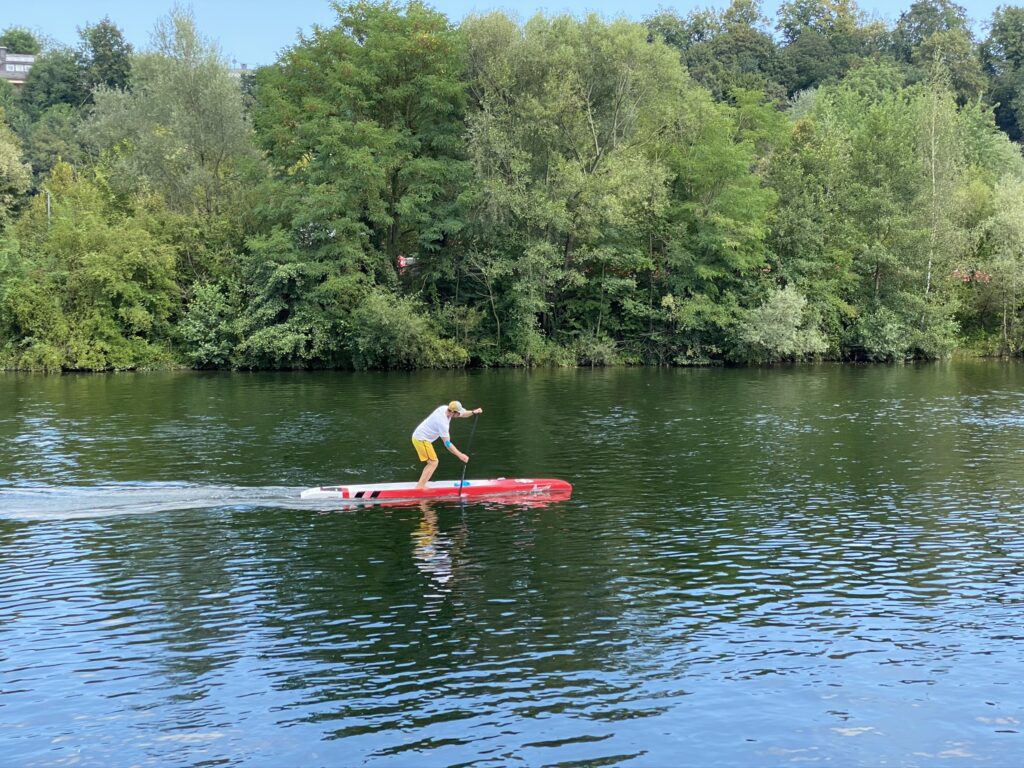
In austria there are some world elite paddlers, showing that it’s possible to outclass the rest of the field with this board. The three Austrian fastest paddlers 2019/2020 won most races on the Strike 2019/20 last season.
Just one little hint… there are boards, better suited for drafting and also boards that are easier to move with a moderate to fast pace. You’ll still need to be able to generate the force needed that this board works the way intended.
Overall I’d say it’s definitely one of the most stable 21,5″ wide raceboards out there and also easier to paddle than the new 2021 Strike in 22,5″.
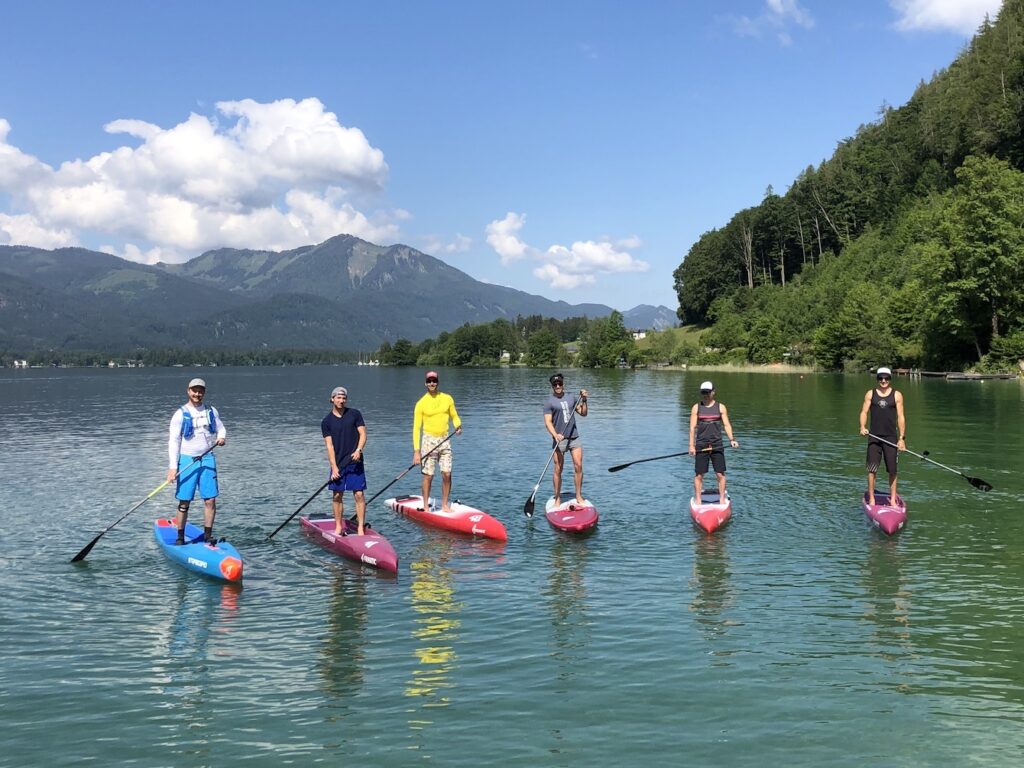
Model Year 2019/2020 vs 2021
I did have the opportunity to have a quick paddling session with the newest 2021 Fanatic Strike and while from the outside I didn’t expect much of a difference, but the 22,5″ wide (but lower volume) version, felt totally different.
The new board feels easier to paddle, but it lacks the predictable initial and secondary stability of the older versions. Secondary stability kicks in way later and therefore I think the riders ability should meet the new requirements.
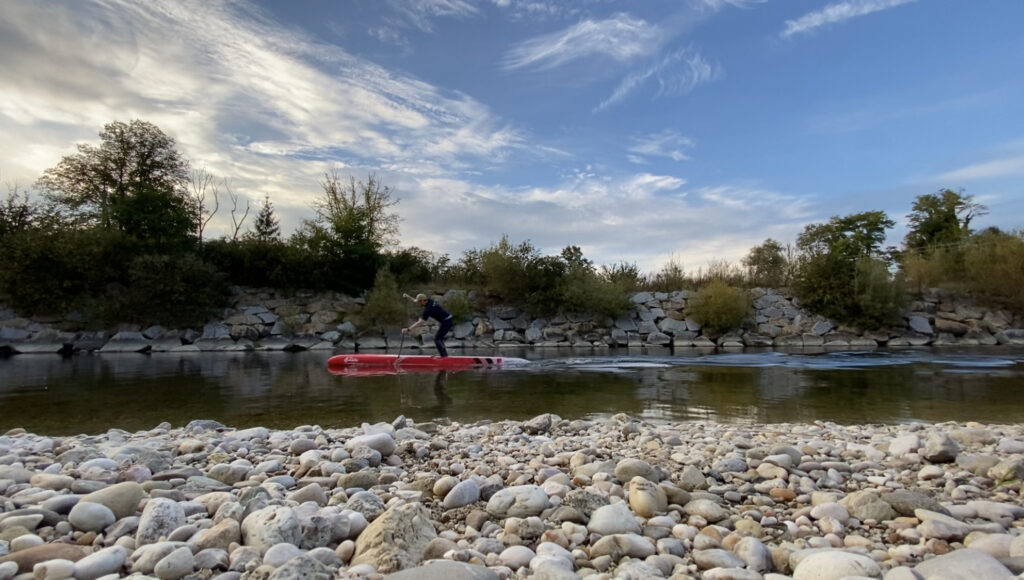
Strong Sprinter!
While the LightCorp Signature 2.0 provides some smooth and effortless glide, the Fanatic Strike can’t offer that sensation, but it’s a pretty stable board for sprinting. A wider tail prevents the board from sinking the tail too much and the concave creates good stability while planing. When I try to reach top speeds, the Signature sinks the tail and the voluminous Nose lifts up instantanously. So when you hit more than 12km/h, it’s hard for me to keep the balance while paddling full on. With the Strike,- steering becomes more sensitive, when hitting planing speed but you don’t get a “loose” feeling.
Different board concepts, same speed?
Flatwater Dugout Boards like the Fanatic Strike, or the Starboard Sprint try to keep enough stability while getting narrower and narrower to push the limits year after year. Other concepts like the lightweight, round bottomed LightCorp Signature 2.0 need to be much wider to be manageable, but once dialed in one could be equally as fast with it. Even though I love the glide of the Signature, narrower boards have another big advantage: you can paddle them more ergonomically.
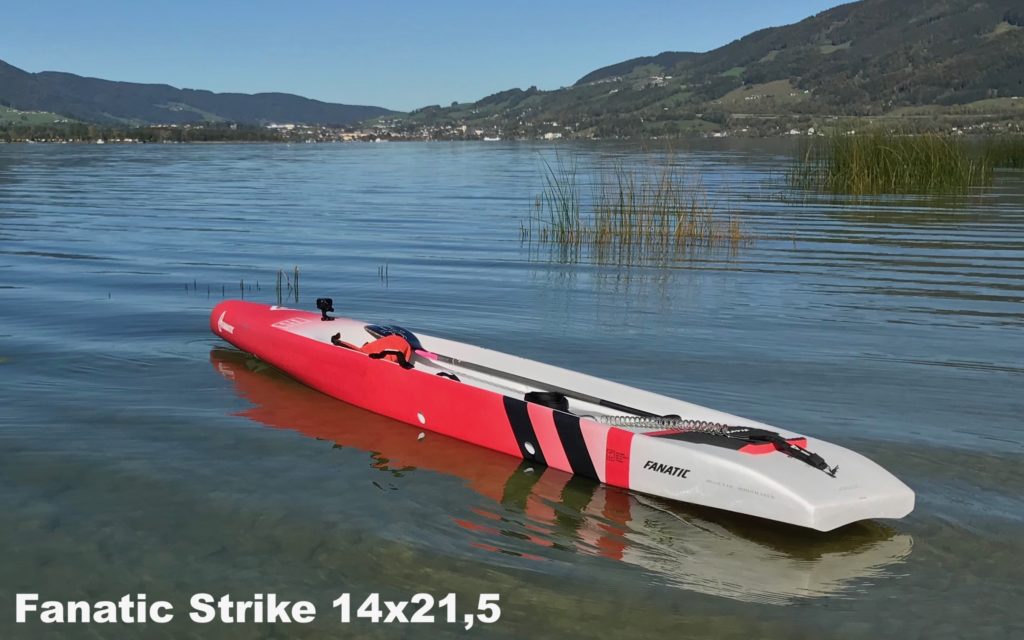
So what?
If the Strike would have been my only board in the last season, some races would have been doable, but I’m sure it was a wise decision to stay with wider boards, more suited for my weight class. In a pure timetrial race, the Fanatic Strike was clearly faster than my previous SIC RS or the Starboard Allstar 2019. In my comparison I could be faster by 2min over a distance of 10km… that’s a lot.
So, if you are in the right weight range, the Fanatic Strike is a very capable race board with the proven abilities to be a leaders board.
Let’s say you feel more comfortable in the midpack and want to have a more versatile board, there are other options you could go for.
In the world of flatwater racing boards, this is a narrow but stable, incredibly stiff piece of gear that you can work your way up to the podium.
As always I want to thank you for reading my articles and please let me know when you want to know something else!
Wanna see what I mean with “stiffness”? Watch this:
